#reclaiming the genre to the very culture that inspired it
Text
I finally watched The Creator and holy shit why didn’t any of you tell me it was going to be that beautiful
#this movie was literally made for me#i’m a ml engineer#I research tech comms & censorship in asia and la#vietnamese language vietnamese people!!!! Thaii!! nepalese!! desi!!!#*cries* god i love being asian#Asians banding together to kill colonizing Americans ilysm#gareth edwards forever the movie maker of all time#we are going to gif the shit out of this#once I find out how to#the creator#this is the dream science fiction was made for#science fiction is not for taking from other cultures and putting white westerners in its place even when that's how it's been.#it's for telling a grave and distant future that is not so distant to deliberately expand your view of how the world works#INCLUDING outside the west and the united states#reclaiming the genre to the very culture that inspired it#And by not only showing the overpillaged overcolonized overpoached focus on southeast asia but also all of asia as a united front.#Imperialism is supported by xenophobia and racism so how else do you tell that story without casting nonwhite races & diverse nationalities#the movie said you just fucking can't!#and its apparently not even that hard with the film coming in at $80M to make (blue beetle cost $104M for comparison that's insane)#and to say 'American' so clearly and so many times oh is so *chefs kiss*#there's flaws but idgaf because they are insignificant compared to the story and themes that are so clearly and respectfully carried out#It's completely okay if you didn't know anything about southeast asia or asia in general#but when watching the movie don't you just understand that imperialism war violence are inherent evils#NOT because (a) other cultures are nice to look at and you can borrow it like through clothes dances food songs religion#(b) that we are pretty advanced and such intelligence shouldn't go to waste and perhaps be put to work#or (c) any other rationalized benefit for imperialists to put a price on a people or life#but by the simple fact that people are human and are hurting#and that the elusive concept of a soul and where we go when we die exist for everyone along with fears emotions and meaning surrounding it#it's about how we must protect these differences in meaning /because/ we are all the same
11 notes
·
View notes
Text
The Intersectionality of Queer Identity & Punk Rock
A Zine?
Yes, zine! Zines are like little pockets of subculture just waiting to be discovered. For me, they've been a constant source of fascination since my middle school emo days, when I first read Perks of Being a Wallflower. It was like finding a secret language, a way to express myself outside the mainstream. The Rocky Horror Picture Show and alternative music were my jam back then (and still are!) and discovering that zines could blend both worlds was utterly mind-blowing.
I delved deep into zine archives, soaking up inspiration from creators who came before me. I researched tirelessly, learning the ins and outs of zine-making, and honing my writing skills for the chance to contribute my own voice to this brilliant community. Suddenly, I had this platform where I could talk about everything I loved in one place. It wasn't just about sharing passions; it was about connecting with others who felt the same way, building a community of like-minded souls bound together by ink and paper. It was liberating!
Why did I choose this mode?
As stated before, zines bring together important conversations that people are passionate about. I am pulling from Perks of Being a Wallflower in the sense that I am bridging two concepts that are very close to my heart. As an as a self-described alternative queer man, I believe it is very important to remember where we came from, who came before us. This zine serves as an homage to the queer/alternative voices that came before me; however, this is not just for other queer or alternative individuals. This is for everyone. Regardless of politics, identity, or location, this zine is for you.
Where does Zine culture come from?
Zine culture, with its raw, unfiltered expression and grassroots ethos, finds its roots intertwined with the rise of punk music in the mid-1970s but can be traced all the way back to the early 1930s. Emerging as a response to the commercialization and homogenization of mainstream media, zines served as DIY platforms for individuals to share their thoughts, ideas, and creations in a tangible, accessible format.[x]
The DIY ethos embedded within zine culture finds its parallel in the punk movement. While previous musical genres such as skiffle and rock and roll also embraced DIY elements, it was punk that elevated the concept to a central tenet of its cultural and musical identity.[x] Punk rejected the polished, corporate-driven sound of mainstream music in favor of a raw, do-it-yourself approach that prioritized authenticity and individuality over commercial success.
In the face of state intervention and commercialization within the music industry, participants in alternative music scenes often embraced DIY as a form of resistance. By creating and disseminating their own zines, bands, artists, and activists asserted their independence from mainstream institutions and asserted their right to self-expression. This resistance was not merely a rejection of external forces but also a reclaiming of cultural autonomy and a celebration of DIY values.
Zine culture, therefore, emerges as a direct response to the limitations and shortcomings of mainstream media and culture. It represents a space where creativity knows no bounds, where voices that are often marginalized or silenced can find resonance and solidarity. In its simplicity and accessibility, zine culture embodies the spirit of punk's DIY ethic, offering a platform for self-expression and community-building that continues to thrive and evolve in the digital age.
Why are zines important?
Zines are vital conduits for self-expression, community building, and the preservation of alternative voices. Rooted in a rich history of resistance and creativity, zines offer a platform for individuals to share their thoughts, ideas, and creations outside the constraints of mainstream media. Emerging as a response to the homogenization and commercialization of traditional publishing, zines embody a rebellious spirit that champions authenticity and individuality.
Unlike glossy, corporate publications, zines are often cheaply made and readily accessible, democratizing the process of expression and inviting participation from individuals of all backgrounds. This accessibility not only empowers creators to share their stories but also fosters a sense of connection and camaraderie among like-minded individuals who share common interests and passions.
At its core, zine culture is about more than just printing; it's about building community and amplifying marginalized voices. By creating and sharing zines, creators forge connections with readers, sparking conversations and collaborations that transcend geographical boundaries. Zines serve as historical and cultural artifacts, documenting the experiences and perspectives of diverse communities, ensuring that alternative narratives are preserved and celebrated. In a world where mainstream media often overlooks or silences marginalized voices, zines offer a space for these voices to be heard, valued, and embraced.
The Basics
A subculture refers to a distinct group within a larger society that shares a set of beliefs, values, practices, and interests that deviate from mainstream culture. Subcultures are born out of a variety of social, cultural, and historical factors, often as a response to the perceived limitations or inadequacies of mainstream society. Dissatisfaction with societal norms and values can lead individuals or groups to seek out alternative spaces where they can express themselves authentically and find like-minded peers.
Subcultural groups often draw inspiration from existing cultural forms, such as music, fashion, art, and literature, which they reinterpret and repurpose to reflect their own distinct identities and sensibilities. This process of reclamation allows subcultures to create new meanings and symbols that resonate with their members, contributing to the evolution and diversification of subcultural identities.
Why punk?
In "Visual Vitriol" by David A. Ensminger, the author encapsulates the essence of punk rock as a refuge for those seeking a space to express themselves authentically. He reflects on the allure of punk, suggesting that many are drawn to it for the opportunity it provides to embrace a queer or unconventional identity comfortably. The quote from "INSIDE FRONT #13" captures this sentiment, highlighting punk as a haven for those who feel alienated from mainstream culture, offering a platform for self-expression without judgment.
Ensminger also acknowledges the significant influence of the LGBTQ+ community within punk. He asserts that "Gays shaped both the looks typifying punk and the history of punk music," recognizing the pivotal role of LGBTQ+ individuals in defining punk's aesthetic and its evolution as a cultural movement. This acknowledgment underscores the profound impact of queer individuals on the visual and musical elements that have become synonymous with punk. In essence, Ensminger's summary portrays punk not only as a musical genre but also as a cultural space shaped by and for those who seek to challenge societal norms and celebrate their identities openly.[x]
Punk 101
Punk rock emerged in the mid-1970s as a raw, energetic, and rebellious response to the perceived stagnation and commercialization of mainstream rock music. Its roots can be traced back to earlier musical movements such as garage rock, protopunk, and glam rock, which laid the groundwork for the aggressive, stripped-down sound that would later define punk. Bands like The Velvet Underground, The Stooges, MC5, and New York Dolls contributed to the development of this new musical aesthetic, characterized by its simplicity, urgency, and confrontational lyrics.
The early punk scene in New York City, centered around clubs like CBGB and Max's Kansas City, saw the emergence of pioneering bands like Ramones, Blondie, Talking Heads, and Patti Smith. These artists rejected the polished, virtuosic style of mainstream rock in favor of a do-it-yourself (DIY) ethos and a more direct, unfiltered approach to music. Meanwhile, across the Atlantic, a parallel punk movement was taking shape in the United Kingdom, spearheaded by bands like Sex Pistols, The Clash, The Damned, and Buzzcocks. Fuelled by a sense of disillusionment with the social and political climate of the time, UK punk bands captured the attention of disaffected youth with their raw energy and provocative lyrics.
Ensminger’s analysis that highlights the significant influence of the LGBTQ+ community within punk, recognizing their pivotal role in shaping the genre's aesthetic and cultural evolution. Punk provided a refuge for those seeking to express themselves authentically, including queer and unconventional identities. This acknowledgment underscores punk's broader significance as not just a musical genre but a cultural space where individuals could challenge societal norms and celebrate their identities openly.
Punk rock had a profound impact on music, fashion, and culture at large. Its influence can be seen in subsequent genres like hardcore punk, post-punk, and alternative rock. Punk's DIY ethic and spirit of rebellion continue to inspire artists and activists around the world, reminding us of the power of music to challenge the status quo and amplify marginalized voices.
What about Riot Grrl?
Isaacson's analysis reveals Riot Grrrl's enduring legacy of empowerment and activism, demonstrating how its in-fluence resonated across subsequent generations of punk and Queercore artists. Riot Grrrl's ethos of self-expression and collective action inspired a new wave of feminist and queer activism within punk and beyond, shaping the cultural landscape and providing a voice for marginalized communities.
The problematic past of punk history
The problematic past of punk, as explored in "Cultural Criminology" by Jeff Ferrell and Clinton R. Sanders, sheds light on the complex relationship between subcultures, societal norms, and the criminal justice system. While punk emerged as a form of resistance against societal constraints, it also harbored elements of extremism and prejudice, particularly evident in its association with neo-Nazi skinheads.[“Subculture, Style, and Crime.” Cultural Criminology, 1995]
The evolution of punk, like many other musical genres, began as a grassroots expression of resistance by marginalized groups within the political-economic system. Ferrell and Sanders emphasize that punk's origins lie in the struggles of young people with limited resources, echoing a sentiment of rebellion against societal oppression. However, as punk gained mainstream attention, certain factions within the subculture, such as neo-Nazi skinheads, emerged, espousing inflammatory and prejudiced ideologies.
Moreover, Ferrell and Sanders note the paradoxical nature of punk's evolution, where expressions of resistance can become sanitized and marketable to mainstream audiences over time. While punk initially served as a platform for marginalized voices to challenge societal norms, its commodification and mainstream success have sometimes diluted its original rebellious spirit.
What is “Queercore?”
Viva la resistance!
"Queercore: How to Punk a Revolution," directed by Yony Leyser and featuring performances by notable figures such as John Waters, Kim Gordon, and Bruce La Bruce, is a documentary that delves into the history and ethos of the Queercore movement. Released in 2017, the film provides a comprehensive look at this subculture that emerged within the punk rock scene as a form of queer ex-pression and resistance. [Leyser, Yony, director. Queercore: How to Punk a Revolution. Totho Productions, 2017]
The documentary explores how Queercore arose in the 1980s as a response to the lack of representation and visibility of LGBTQ+ individuals within both mainstream society and the punk scene itself. It showcases interviews with key figures who were instrumental in shaping Queercore, shedding light on their motivations, struggles, and achievements. Through their stories, the film captures the spirit of defiance and creativity that defined Queercore, challenging societal norms and advocating for queer liberation. [x]
D. R. DeChaine's article "Mapping subversion: Queercore music’s playful discourse of resistance" provides an insightful exploration into the world of Queercore, shedding light on its history, identity politics, and subversive nature within the punk rock scene. The article delves into how Queercore emerges as a fusion of punk rock music and queer politics, embodying punk's rejection of mainstream commercialism with its fast, raw sound and DIY ethos. It emphasizes the politically charged nature of Queercore, where artists use sexually explicit and often vulgar lyrics to challenge societal norms and express a culture that defies mainstream conventions.[x]
A key theme is the role of “play” within Queercore, offering participants a space to resist and subvert dominant cultural narratives. This play is not just recreational but empowering, providing temporary liberation from the oppressive ideologies of mainstream culture. DeChaine highlights the historical silence around homosexuality in music, pointing to the challenge of connecting queer and punk discourses due to this silence.
In Ambrosch's exploration of gender, feminism, and queer identity within punk culture, "'Refusing to Be a Man': Gender, Feminism and Queer Identity in the Punk Culture" delves into the subversive nature of punk as a reaction to the 'rock machismo' prevalent in the 1970s. From its inception, punk has challenged heteronormative notions of gender and sexuality, with first-wave artists intentionally blurring boundaries. Ambrosch highlights bands like Bikini Kill and Crass as exemplifying an intersectionality and blurring of gender boundaries by first-wave punk artists and their exploration of nonmainstream gender identities.[x]
The author explores the evolution of the term 'punk,' tracing its origins from Shakespearean times to its later connotations of 'young male delinquent.' This linguistic history mirrors punk's rebellious spirit and its embrace of non-mainstream identities. Punk, according to Ambrosch, fosters an environment for challenging established norms, including gender and sexuality, with bands since the late 1970s addressing these issues.
However, Ambrosch also critiques punk's gender dynamics. Drawing on Sharon Cheslow's insights from Chalk Circle, the author discusses how male anger is often romanticized in punk, while female anger is viewed as threatening. Men tend to dominate cultural spaces within punk, making it challenging for women and LGBTQ individuals to fully participate.
Queercore Bands
"QUEER AS PUNK: Queercore and the Production of an Anti-Normative Media Subculture" by C. Nault, published by Routledge in 2013, offers a comprehensive examination of the Queercore movement and its role in creating an anti-normative media subculture. This book delves into the origins, development, and significance of Queercore as a subversive force within both the punk rock scene and broader LGBTQ+ culture.[x]
Nault's work highlights how Queercore emerged in the 1980s as a response to the marginalization of LGBTQ+ individuals within punk and mainstream media. The book explores the ways in which Queercore artists used music, zines, and other forms of media to challenge heteronormativity and traditional gender roles. By rejecting assimilation and embracing radical self-expression, Queercore became a platform for marginalized voices to be heard.
The author discusses key figures and bands within the Queercore movement, such as Tribe 8 and Pansy Division, who used their music and performances to confront societal norms and address issues of sexuality, gender identity, and politics. Nault also examines the impact of Queercore beyond its music, delving into its influence on art, literature, and activism.
Problematic Queercore Bands
Without naming any specific bands or groups, I think it is important to acknowledge the problematic side of Queercore. Just like punk rock, Queercore has its controversial and horrific sides. I believe it is crucial to acknowledge problematic Queercore bands as their actions and behavior can have significant consequences for the LGBTQ+ community and the broader punk scene. By shining a light on these issues, we can address harmful behaviors, challenge oppressive attitudes, and work towards creating safer and more inclusive spaces within the scene.
Acknowledging problematic behavior within Queercore bands helps hold them accountable for their actions. These bands may espouse values of inclusivity and acceptance, but if their actions contradict these principles or perpetuate harm, it's essential to call attention to it. Holding individuals and groups accountable for harmful behavior sends a message that such actions will not be tolerated and helps protect vulnerable members of the community. This allows for conversations about power dynamics, privilege, and accountability within the LGBTQ+ community itself. Just because someone identifies as queer does not absolve them of responsibility for harmful actions.
Being queer does not inherently make you anti-racist. Being queer does not inherently make you anti-fascist. Being queer does not inherently make you a feminist. Being queer does not inherently make you a person with good values.
Into the Mainstream
Despite the flaws of individual figures within the movement, Queercore's presence in the mainstream contributes to greater visibility and acceptance of LGBTQ+ identities. Just as Oscar Wilde's contributions to queer literature remain significant despite his personal flaws, Queercore bands play a vital role in amplifying queer voices and experiences. Their presence challenges mainstream narratives and provides a platform for LGBTQ+ individuals to express themselves authentically.
Queercore as Resistance
Queercore embodies a defiant rejection of mainstream expectations and norms regarding gender and sexuality. Its very existence challenges the notion that queer identities should be hidden or marginalized, instead asserting the right to visibility and self-expression.
At its core, Queercore disrupts dominant narratives by amplifying queer voices and experiences. Through music, zines, art, and DIY activism, it provides a platform for individuals to express their identities authentically, free from societal constraints. This radical self-expression is inherently political, challenging the status quo and demanding recognition and acceptance for all sexual orientations and gender identities.
Queercore's resistance is multifaceted, extending beyond the realm of culture and art to encompass social and political activism. It confronts discrimination and violence against LGBTQ+ individuals, advocating for equal rights and protections under the law. Through grassroots organizing and community building, Queercore fosters solidarity among marginalized communities, amplifying their collective voices in the fight for justice and liberation.
Moreover, Queercore serves as a form of cultural resistance, reclaiming spaces traditionally dominated by heteronormative and cisnormative narratives. By creating inclusive and welcoming environments within the punk and DIY scenes, it challenges exclusionary practices and fosters a sense of belonging for queer individuals. In doing so, Queercore disrupts hegemonic power structures and asserts the right to exist unapologetically in all spaces.
Queercore's resistance is both personal and collective, challenging oppression at individual, societal, and systemic levels. By embracing radical self-expression, advocating for social change, and reclaiming cultural spaces, Queercore stands as a defiant assertion of queer identity and autonomy in the face of adversity.
What’s in it for me?
Haha, get it? Ah, it’s a Queercore joke. Pansy Division? Anyways… Queercore extends further than just the queer community, it embraces feminist and BIPOC intersectionality while providing a platform for marginalized voices. In the face of ongoing discrimination and violence against LGBTQ+ individuals in America, Queercore serves as a beacon of resistance, advocating for social change and celebrating diversity.
At its core, Queercore challenges the heteronormative and cisnormative structures pervasive in society. It disrupts traditional narratives of gender and sexuality, offering a space for individuals to explore and express their identities freely. This liberation extends to feminist and BIPOC perspectives, acknowledging the intersecting struggles faced by marginalized communities. By amplifying diverse voices, Queercore dismantles oppressive systems and paves the way for intersectional solidarity.
In America, anti-LGBT sentiment remains a pervasive force, manifesting in various forms of discrimination, violence, and legislative attacks on queer rights. Queercore confronts this hostility head-on, advocating for LGBTQ+ visibility and empowerment. Through music, zines, and DIY activism, it challenges societal norms and demands recognition and acceptance for all sexual orientations and gender identities. By rejecting assimilationist tendencies and embracing radical self-expression, Queercore asserts the right to exist unapologetically in a hostile environment.
Furthermore, Queercore serves as a bridge between queer and straight/cis communities, fostering understanding and empathy across divides. It invites allies to participate in the struggle for LGBTQ+ rights, recognizing that liberation requires collective action. By creating spaces that welcome individuals of all identities, Queercore promotes dialogue and mutual support, challenging stereotypes and fostering solidarity. Queercore isn't just for queer people; it's for everyone committed to building a more inclusive and equitable society.
#queercore#punk#punk rock#gay#lesbian#bisexual#transgender#bi#lgbt#lgbtq#lgbtqia#essay#anti transgender#helpful critics welcome#protect trans people#protect trans youth#queer#queer community#lgbtq community#lgbt pride#zine#zine adjacent#this is for a class#there is a super cool cover#but tumblr is not set up for zines#because its tumblr#alt#alternative#long post#in progress
10 notes
·
View notes
Photo


Title: My Brother’s Husband
Author: Gengoroh Tagame
Genre: Comics | Family | Friendship | LGBTQ+
Content Warnings: Homophobia | Death
Overall Rating: 10/10
Personal Opinion: Quite possibly my most favorite manga of all time. I own a lot of Tagame’s works so I’ve always been a big fan of his art style. To see it in a mainstream book all about educating people on queer folks? That is just chef’s kiss perfection. It’s wholesome, it’s intelligent, it’s refreshing, and it will break and fix your heart over and over again. Please purchase a copy for yourself.
Do I Own These Books? Yes! I own both volumes and I even have the first volume signed by Tagame himself!
Spoilers Below For My Likes & Dislikes:
Likes:
- First and foremost, the art style. I personally love it. And not just because of the details of Yaichi’s and Mike’s muscles when they’re bathing. No, I just adore all of their character designs and the vibes they give off. Yaichi is a single dad who is a bit unsure of himself, I can see that in how he stands in volume 1′s cover. Kana is a precocious child but a child nonetheless, I see that in how she stands in volume 1′s cover. Mike is Mike. I see that in, well, you know already.
- Kana is the most adorable thing. She has a very pure view of the world that was unaffected by her father’s bigoted views because he never taught them to her. And it is mainly through her that Yaichi, her father, begins to understand queer folks better. When she says she doesn’t get why gay people can’t marry, he pauses and rethinks his position. It’s adorable and inspiring witnessing a parent learn from their child and being open to learning from them too.
- That’s the thing I love most about these books. Yaichi has a lot of bigoted and narrow-minded opinions concerning his brother’s sexuality. But a lot of that is because he was never educated on it. After Ryoji tragically passed away and Mike came into his life, he realized it wasn’t too late to learn more about his estranged brother. Because here was someone still connected to Ryoji and probably knew him better than most people. Mike taught Yaichi a lot and Yaichi was open to learning. He kept his bigoted thoughts to himself, never actually voicing them out, and instead took in everything Mike told him and grew from it. By volume 2, Yaichi was even prepared himself to tell people about his brother’s husband from overseas and how it’s perfectly normal.
- Mike is just a giant teddy bear and I find him to be adorable and hot. Mainly though, I just like him for being such a big-hearted fellow. He’s proud of himself, he’s open about his sexuality, he’s curious but respectful of the culture around him. He’s the ideal man in my opinion. And I just love the role he took up as the jolly uncle in Kana’s life. They were so wholesome playing together in basically every chapter. Ugh, my heart still breaks for Kana when Mike had to go back to Canada. She loved him so much.
- Speaking of Mike being open about his sexuality, it’s a little hard to see (for my color blind eyes anyway) but his shirt on the covers include a pink triangle. It was once a badge of shame employed by Nazis to identify LGBTQ+ people but was later reclaimed to be a symbol of pride. Mike knows this and that’s why he wears that shirt and that’s why I love him so much. Yes, know your history Mike!
- Kana’s mother, Natsuki, and Yaichi are divorced. But they maintain a healthy and friendly relationship. I fucking love that. They acknowledge that they were a bad match when they were married and that they’re better as individuals and as Kana’s parents when they’re separated and I find that to be so wholesome. But I also just love that Natsuki was so open-minded about Mike herself when she met him. These four characters all together make such an adorable family unit.
Dislikes:
- Yaichi admits his mistakes and homophobic outbursts were wrong but damn did I cringe at some of the things he thought. The story is mainly about his growth though so I’ll give it a pass.
- There’s honestly nothing I really dislike about this story. Everyone should go purchase a copy for themselves.
#Booksbooksbooks#Book Rec#Book Review#Book Blog#Comics#Queer Comics#Manga#My Brother's Husband#Otouto no Otto#Gengoroh Tagame#LGBTQ#Queer Representation
45 notes
·
View notes
Note
squadra members as kings? what would each one be as a king of his realm? you can take this to a variety of directiins, ve it realism historical or fantasy kingdoms, long in the past or modern... i guess what i am craving for is each as a king + general genre/outline/vibe of this story 👀
Risotto: I feel like he would have risen to power by assassinating a usurper to reclaim the throne for his own family; at the same time, the rumors and the repercussions would have ensured that his reign would be bittersweet as well as short. Say, the neighboring kingdoms have conspired to put that usurper on the throne because that person would have favored them in terms of foreign policy, but with Risotto foiling their plans, the neighboring kingdoms decided to go to war with him instead. He is known as the Knight King. I want him to have an enormous sword, and I want a dozen men to carry his body home from the battlefield.
Formaggio: Aww, gosh. My immediate thought was that if you wanted to have a miniature kingdom with a Tiny King, here is the perfect candidate. Maybe he made a fairy turn him small with the ability to speak in animal tongues, and now he has a whole empire of mice that have learned to walk on their hind legs to be fancy and songbirds as his messengers. Despite his stature, he would be such a wild card in foreign negotiations; imagine some normal king trying to throw his weight around, and this little rascal just tells him he has agents in all the kingdoms and they will target the vital crops first. An absolute madlad.
Prosciutto: Oh, man, this is tough. I absolutely love an eldritch angle on Prosciutto so I was tempted to go with him being some sort of lich king type being? But then I realized that out of everyone here, he has the potential to become that One Illustrious King who remains legendary for centuries to come. I'm talking amazing statues and portraits accentuating his handsome face and how much royal cunt he served. I'm talking anecdotes of his rapier wit and his absolute ruthlessness in times of war. I'm talking him sponsoring so much culture, particularly fashion. The type of king where you read a true history of his reign and you're still like, Wait, is this real? Really?
Pesci: I want this boy to be King of the Merfolk. He is friendly to humans and actually fascinated by their relationship to the sea, to the point where he has a very extensive fishing pole collection, wears hooks as earrings, and actively trades with the local people - in exchange for water-resistant trinkets, which have actually inspired an artisan revolution in the region, the merfolk are trading pearls, shells, deep sea fish, and the finest seaweed. He isn't particularly about power and control so he rules over the waters with a loose hand, but threaten anyone he loves and he might just invoke a storm upon your ships!
Ghiaccio: The predictable answer would be to make him a fantasy-type Ice King, but somehow it feels better, more organic, I guess? To just have him be the king of a realm in a very cold climate where he is a small man wearing enormous furs for warmth as well as swag, and he is constantly challenging himself to endure the cold better by swimming in the icy waters and meditating outside in his own constantly angry way. Might have difficulties skirmishing too far from his region or out of season, but attack him on his turf, especially in the dead of winter, and there will be no survivors.
Melone: Now this one is a mixed bag. On the one hand, he is a Sovereign Scholar, he is a thinker and a scientist and a philosopher and an alchemist, the type of monarch that isn't afraid of new ideas. On the other hand, he might just fuck around so much among the courtiers that there would soon be a hundred different bastards in line for the throne, and not being too whole of body, Melone would have to spend the last years of his life devising some sort of competition to figure out who is fittest to rule. Did he just invent the Hunter Games but for his own children? Goes down in history as a very interesting but very confusing period for his people.
Illuso: Mirror, Mirror on the wall, who's the most paranoid ruler of them all? That's right, it's Little King Meowmeow over here. I could see him as being the eldest of a dozen royal siblings with a sickly father who soon passes him the crown by default, but now this otherwise good-looking and even somewhat functional specimen lives in constant fear of his seven swole and terrifying brothers, who are not only praying for him to be infertile, but are so ready to slaughter him to take his place. He will be romanticized as a delicate and tragic figure whose policies might have been shit, but just look at that hair. Wow. (He was ultimately killed by his sister, who also killed all her other siblings. She then reigned for fifty years.)
Sorbet: I am sad to say that he would go down as His Miserly Majesty, the type of king that is absolutely obsessed with the treasury and the gold. Perhaps he assumed the throne at a time when things were looking bleak for the monarchy, perhaps he was born this way, but the fact is that he is constantly counting coins and entering into trading agreements with him is like trying to draw blood from a stone with a widow's peak. Despite all this, he is sporting little to no finery, and nobody really understands where all that wealth is going, because it's not really circulating that well if you catch my drift. Kind of an enigma, but historians will probably figure it out.
Gelato: I sincerely believe that if you combined a feral king and a goofy clown, he would be what comes out of that interaction. In fact, let it be known that his mother the Queen had a turbulent affair with the court jester, and now their offspring is passing very silly laws and setting things on fire and he is a nightmare to negotiate with because in-between puns and being just a little too familiar, he will murmur in your ear that he will stab you thirty times if you back out of that sweet bilateral agreement the two of you had just made. Very controversial in retrospect, but is known for having thrown some of the most amazing feasts and festivals the kingdom has ever known.
#jjba#la squadra#risotto nero#formaggio#prosciutto#pesci#ghiaccio#melone#illuso#sorbet#gelato#squadrah headcanons#squadrah original#HOPE YOU ENJOY FRIENDO!!!
21 notes
·
View notes
Text
Pinned Post
[Order of info: About | BYF | Will Block]
-
ABOUT
All the personal information I'm willing to share is in my bio
This blog will host an array of different kind of posts, here's a brief list of the main things I will make and/or reblog:
Shitpost/rambling
Selfship imagines
Original writing, short fics, etcetera
Pro freedom of expression/art/fiction/etcetera
Anti cringe culture/harrassment/shaming
This blog is also a side blog so I cannot like posts, send public asks/submissions, or follow other blogs
-
BYF
I am often fatigued on top of having an active life offline in the real world, so if you expect frequent or even just occasional posting/reblogging this isn't the blog for you
I also am very hesitant of getting close to people online, let alone making friends online. I do my best to be polite and kind, but I am not here to make friends, just to have fun and vibe. If I happen to make a friend, then I make a friend, but I doubt that will happen. If you will feel rejected and bad about me not being close or open to being friends with you, this is not the blog for you
I have a problem with thinking faster then I can type and reading faster then I can proofread, so expect occasional mistakes such as absent/repeated word (e.g. "he went to store" or "he went to the the store"), incorrect usages of their/there/etcetera (e.g. "he when over their") on top of general misspellings. I promise I love the English language and all it's complicated bullshit, I just can't bring myself to slow down enough to not make mistakes or to even correct mistakes no matter how hard I try, and trust me, I try lmao. If that will be problem, this is not the blog for you
Also I am not a selfshipper, I have never shipped myself with any characters nor do I have any desire to do so in the future, I have a loving boyfriend IRL and I loyal to him and him alone. I just use selfship terminology and stuff because I do enjoy pondering about relationships dynamics between OC x Canon and OC x OC and what-not, just from a story teller point of view. I also just like the community and find that it's far more accepting of my love for the romance genre then other communities, especially actual writing communities funny enough
Also all my selfship imagines/x reader posts/etcetera will feature a fem!reader who may sometimes be girly and other times more tomboy-ish. If you do not like that because you prefer male or nonbinary self inserts, then this is not the blog for you
-
WILL BLOCK
A note before the list, I will also block people purely off of vibes or for minor annoyances. I value my peace and I come online to have fun, not to be made angry or annoyed or upset. Blocking isn't personal, it's a tool to be used to ensure a good online experience. If you take blocking others or being blocked by others personally then that's your problem, not mine
Okay, now here's the list of people I'll block
Minors (anyone 19 or under) will also be blocked. This blog may be SFW but that doesn't mean minors are welcomed. Kindly, go find your peers and leave adults alone
Selfshippers who have doubles DNI in their profile. I am uncomfortable with those who exclude others over fiction stuff interacting with me. No hate to anyone with doubles in their DNI of course, but y'all just strike me as way too possessive over a fictional character for my personal tastes. You do you, just do it away from me lol
Selfshippers (or anyone really) who participates in shipcourse by putting dnis in their banners and/or tags, be it "safeship" or "antis" or the inverse with "proship" or "normalship". Don't care if you have that in your bio or pinned, I am just sick of posts that feel more about excluding others then just having fun
Selfshippers (or anyone really, but this seems to really bad in the selfship community) who steal posts under the guise of "reclaiming" them or otherwise making them more "accessible"/"safe". Take inspiration all you want from anyone you want—simplify, expand, transform—but don't just take and claim as your own. There is never an excuse to steal, just block, maybe report if they're breaking the TOS, and move on rather then being petty
Anyone with "basic DNI" on their profile, I just assume I fall into your vague category of unsavories for either being bisexual or anti censorship or both and block accordingly
People who are pro censorship of expression/art/fiction/etcetera
People who use cringe culture, purity culture, etcetera to shame, humiliate, belittle, or otherwise other people
Anyone who uses the phrases "kill yourself", "killing myself", "go play in traffic", "hope your cat dies", "your family hates you" or any other variations of wishing ill and/or harm on anyone. Doesn't matter if it is said seriously, as a joke, or even in retaliation. This shit is an instant block on sight, I do not under any circumstances want to see this kind of crap. I am anti harrassment and do not tolerate harrassers
Anyone who is or "sympathizes" with real life, genuine pedophiles and their ilk, even if under the guise that "it's a disorder!" or "they can't help it!". Pedos and the likes are the one exception to my anti harrassment stance, the second you sexualize and find a real life child and/or animal arousing is the second you become an abuser who deserves nothing but the worst
People who conflate fiction with reality/think that someone with an interest for a certain theme or dynamic in fiction has an interest or desire for the real life equivalent
People that think fiction affects reality on a 1:1 ratio/fiction alone can normalize something harmful/taboo/etcetera AND people who genuinely think fiction can never affect reality ever and/or think that some themes and dynamics aren't inherently weird when presented a certain way and that people who are weirded out by certain themes dynamics are pro censorship/purity culture/etcetera
People whose activism and what-not is based in being reactionary and arguing with the opposing side rather then focusing on supporting their side and explaining to others/the middle/etcetera why their side right/good/better/etcetera
People who appropriate queer and progressive language to try and argue for normalization and support of abuse and/or bigotry. One example would be "cosangs" who try and argue incestuous abuse isn't actually abuse, and another example would be the radqueer/pro para community that argues that "identities" such as "transnazi" and "transrace" are vaild and queer and also argues that pedophiles and the likes are just poor misunderstood queers and children/animals can somehow consent
People who support, defend, or are even just neutral on sexual RPF of teenagers and children and/or try to argue that it isn't CSEM/sexual harrassment just because it's drawings/writing/etcetera despite the fact it inherently exploits the image and likeness of real minors for sexual exploration and/or gratification
Racists, queer/lgbt-phobes, ableists, bigots in general. This includes bigots within minorities too, such as gays/lesbians who hate the opposite gender, gays/lesbians who are bi-phobic, queers who try to exclude nonbinary people from the community or are just transphobic in general, etcetera
A disclaimer, I use the words "will block" rather then DNI because frankly, DNIs are 1.) useless and do not work 2.) place the expectation and responsibility of your online experience into the hands of strangers which is both dangerous and an unfair burden to place on them 3.) place the expectation onto other users to use this site in a way that is not designed to be used
I am also not going to go through all the blogs that like my posts or all the blogs who I reblog from to see if they fit my criteria, that would just be too stressful and take all the fun out of being online. This "will block" list is more-so for the people who want to follow me and/or who want to talk to me and the people who I see around when browsing tags
0 notes
Note
For whatever OC you wish:
❤️ (heart) - Who is the most important person to your character? To what lengths would they go to protect this person?
🧣(scarf) - What comforts your oc? Is it an item? An action? A person? Whatever it is, how any why does it comfort them?
🎸 (electric guitar) - What’s your character’s music taste like? Do they have one or two artists they play on repeat or do they have a varied and eclectic collection of music? Do they like mainstream artists or prefer underground musicians? What genres do they enjoy?
HMM i/t i will answer for mae!
❤️: jimmy! and later, kim too! she puts her life on the line for one of them in her ~canon, and goes through what is basically her personal hell for a LONG time for the other… however both these things would require me to spill spoilers to tell you about in depth, so i will spill all once you’ve gotten thru the series 😈 to answer the question in short: she’d kill or die for either of them tbh. SHE DOESN’T WANT TO but she would.
🧣: burlesque dancing! she took it up after being sa’d, after being inspired by seeing a show and witnessing how powerful and artful the performers made their sexuality. she’s an actor and natural performer with a love of costuming so to her, it felt like a very natural way to go about reclaiming her own. her troupe is also very loving and supportive and she finds deep sisterly bonds there, so there’s an important social aspect too.
🎸: she’s a pop connoisseur first and foremost, with a love of the artsy stuff on the outskirts of the genre as well as an artisanal selection of hits. she also listens to some vintage music that she grew up listening to in the 70s and 80s — pop and like, hippie stuff, as the latter is what her parents played a lot. finally, she loves a good diss track… her hater streak and her steady intake of pop culture merge in such a way that she enjoys following feuds like that in the media!
#selfproclaimedunicorn#asks#my ocs#ahhhh tysm!!! pls enjoy these tidbits abt my aspiring starlet#aspiring so ferociously with her claws and teeth lol
1 note
·
View note
Text
Okay but just imagine being Steve Rogers, and going under the ice in 1945, which was after the publication of The Hobbit (1937) but before The Lord of the Rings (1954).
Steve Rogers very much strikes me as a young man who’d enjoy early genre spec fic, so I like to think that he read and enjoyed The Hobbit when he came out. Then he comes back in the 2000s and discovers that the same author who wrote this charming, whimsical children’s book went on to write three sequels, but the sequels are genre-spawning literary epics, which have become a touchstone of American culture and went on to inspire a hundred knockoffs and entire new schools of western fantasy
It’s like. Imagine that you read Matilda when you were younger, and enjoyed it. Then you got hit by a car and went into a coma and when you came out twenty years later you found out that Roald Dahl had gone on to write The Trunchbull Chronicles, a doorstopper epic war story about Matilda’s daughter Madara, who inherited her mother’s psychic powers and spearheaded a galaxy-wide rebellion against a race of eldritch masters coming from beyond the stars to reclaim their dominion over Earth. Bruce Bogtrotter's nephew, Baradin Bogtrotter, builds spaceships. Everyone treats this with utter gravitas.
2K notes
·
View notes
Text
TerraMythos' 2020 Reading Challenge - Book 30 of 26

Title: The Cloud Roads (2011) (The Books of the Raksura #1)
Author: Martha Wells
Genre/Tags: Fantasy, Science Fiction (ish), Adventure, LGBT Protagonist, Third-Person
Rating: 8/10
Date Began: 10/20/2020
Date Finished: 10/28/2020
Moon has spent most of his life as an outsider, wandering from place to place. An orphan with little clue to his origins or past, he has the ability to transform into a large, winged creature. Due to an unfortunate visual similarity to the Fell, a destructive race of marauding shapeshifters, he has to keep his identity hidden. When his current home discovers his secret, the residents assume the worst, poison him, and leave him to die.
By luck, Moon is rescued by a huge shapeshifter named Stone. According to Stone, they're both members of a species known as the Raksura, and a nearby group is in the midst of a dire crisis. Desperate to know more about his past, Moon agrees to help. He follows Stone to Indigo Cloud, a dwindling court of Raksura under threat from the Fell. While the Raksura initially distrust Moon, and Moon has difficulty adjusting to their way of life, they soon discover they need each other to survive. Moon must come to terms with his place among his newfound people and help them overcome an insidious and overwhelming enemy.
He spoke the thought that had become increasingly obvious all day long, with every interaction he had had. “I don’t belong here.” Maybe if he had been younger, there would have been a chance, but not now.
Stone made a derisive noise. “You’re afraid you don’t belong here. There’s a difference.”
Moon seethed inwardly but held his temper, knowing it would give Stone a victory if he lost it. “I’ve been walking into new places all my life. I know when I don’t belong.”
Stone sounded wry. “You’ve been here half a day, and for most of that you were asleep.”
Moon said sourly, “I like to make quick decisions.”
Minor spoilers and content warning(s) under the cut.
Content warnings for the book: Lots of graphic violence, action, and death. Non-graphic sexual content. Mind control/manipulation is a whole thing. R*pe is plot relevant and mentioned several times, but not depicted.
I read Martha Wells’ The Murderbot Diaries series earlier this year and enjoyed the hell out of it (reviews here and here). Featuring fantastic writing and the most well-written perspective character I’ve ever read, I cannot recommend that series enough. So I was interested in reading other stuff by Wells, and ultimately settled on this series. Murderbot is a tough act to follow, and The Cloud Roads is MUCH different in tone/genre, but I still thoroughly enjoyed this book and look forward to more.
To me, the worldbuilding is the strongest aspect of The Cloud Roads. The Three Worlds is an interesting and creative setting. Humans are completely absent-- instead, there are dozens of different sapient humanoid races. While there are some cultural analogues to our world, everything feels distinctly alien and science fiction-y. I find it interesting that there don't seem to be countries or empires as such, though I get the sense it’s intentional. The Raksura, a main focus of the novel, are based on insect colonies like bees or ants, but with social complexity more like a wolf pack.
Moon is a good choice of protagonist for this novel due to his general ignorance of the world around him, so we get a firsthand view of someone learning about it. Furthermore, I think Wells does a great job in heavy worldbuilding without it feeling overbearing. When information is doled out, it's always because it's relevant to the situation at hand, so the learning progression feels very natural. By the end I got the sense of a vast and complex world that we'd barely scratched the surface of-- which is a good thing.
The Raksuran culture is fascinating. Personally I find insect colonies super interesting so I love to see a fantasy race borrow some elements of that. Without going into a whole essay, the matriarchal Raksura have a biological caste system and a ruling queen responsible for a lot of the reproduction. They're separated into two main groups-- winged and not. Within those two categories are various social roles one performs for the colony. All Raksura are able to shapeshift between a smaller almost-human form and a larger, more animalistic one. Despite the insectoid inspiration, the Raksura seem to be a hybrid of mammals and reptiles. They’re... sort of dragons? Gargoyles? Dinosaurs? There’s no perfect analogy. One thing I particularly admire about the writing is how Wells manages to make the Raksura human enough to be relatable, but with pronounced animal-like behavior to make the distinction obvious. Maybe I’m a bit of a furry, too. Sue me.
I also enjoyed reading a story where the main characters can fly. I haven't read many books like that; I just think it's neat! It adds an extra element to travel sequences, or even how the characters view and observe the world around them. Journeys in fantasy can be boring to read, but this element keeps it interesting.
The Cloud Roads’ plot isn’t mindblowing, but I think it serves the purpose of the novel well. It’s a pretty standard stock story-- orphan/loner must set out to reclaim his heritage and a new place in society. I think this plot works here because the worldbuilding is so complex, it would be difficult to also balance a complicated story. What keeps it interesting is that Moon struggles to adapt to Raksuran society; it’s his whole character arc. He is inherently mistrustful of the others and in many cases the feeling is mutual. The Raksura initially see Moon as a means to an end; something he is acutely aware of, and Moon keeps himself deliberately detached. The emotional thrust of the story lies in certain characters genuinely wanting him to stay on his own merits, and Moon realizing he actually wants to as well.
One thing I hope to see more of in future installments is good ol’ character development. Moon is well-realized in this novel; he’s emotionally repressed, but starts to get over it and find a place to belong over the course of the story. We also gradually learn about his past, which adds more depth and context to his behavior. But I want more from the supporting cast. Jade, Chime, Pearl, and Stone get some development but I found myself wanting to know more about them outside of the main plot and their direct relationship to Moon. All the books are written and published by now so I guess I'll see for myself. One pattern I do like with the side characters is how several are set up to be obvious antagonists, but turn out to not be so bad, or are otherwise open to changing their ways. I like how Moon’s limited perspective influences perceptions of certain characters. Also: loving Moon's Peak Bisexual Energy. I tagged him as an LGBT Protagonist since he's clearly bisexual, though it isn't a big focus in the story. Casual rep is still nice to see.
My main challenge is the Fell, which are basically an Always Chaotic Evil race of shapeshifters similar to the Raksura, and serve as the novel’s antagonists. I personally don’t find them that compelling. They sort of remind me of Reapers from the Mass Effect series, but thus far lacking the grand ulterior motive. They just come off as pure evil without much nuance. I also have to wonder how the species has survived this far if their main method of survival is targeting entire cities and eating the inhabitants (and each other?). I’m not sure where that whole thing is going. Maybe insight in future novels will help me on this.
I’ll be honest, while I personally enjoyed The Cloud Roads, it is pretty unusual and I don’t think it’s for everyone. If anything, I recommend reading The Murderbot Diaries before this series, but both are well-written and creative. I’m planning to read book 2, The Serpent Sea, after this one, so look forward to that!
#taylor reads#2020 reading challenge#BONUS ROUND#8/10#there's a significant early spoiler i'm avoiding in the summary and review LMAO sorry
7 notes
·
View notes
Text
RWBY and Masculinity
I love RT’s, and specifically RWBY’s take on masculinity so much. The show subverts all expectations wrt their male characters and their development, which is why the male viewers experience major cognitive dissonance between what they expect and what story is actually being told (and then have the gall to call it bad writing). Under cut because this has gotten so long so fast.
The two main male characters - Sun and Jaune - are subvertions of genre/medium staples.
Jaune specifically hits all the beats of the typical male self-insert in a harem anime: he’s catapulted into a world he knows nothing of, instantly establishes 3 different dynamics with 3 different female characters/archetypes - Cheery, Ice Princess and Hot Tall and Earnest - one of whom he immediately sets his eyes on, he’s surrounded by women that are a whole lot more powerful than he is (and arguably THE most powerful one is instantly drawn to him), he’s essentially powerless and dealing with self-esteem issues and is nondescript enough to be a vehicle for any male viewer to project themselves onto. Which is why you have a good chunk of Jaune’s fandom from V1 being the embodiment of the Venn diagram intersection bewteen weebs and incels like That, and why there’s so much harem fanfic revolving around Jaune.
CRWBY have heavily drawn from anime when making rwby so I don’t think this was coincidental; they laid out the groundworks to subvert a specific trope. Male fans, however, bought into the facade and kept waiting for Jaune to essentially steal the spotlight, be the focal point of several love interests and get a power up that’ll let him be their own power fantasy to boot, but CRWBY took his character in the very opposite direction.
Jaune makes a lot of mistakes but what defines him is how earnestly he learns from them and redeems himself. He apologizes for lashing out at Pyrrha as a result of his own feelings of inadequacy and powerlessness when bullied by Cardin and then accepts her offer to teach him, sincerely taking instruction from her and then taking inspiration from her strength. Once he realizes his seduction skit with Weiss is not only ridiculous but wrong, he instantly changes his approach and prioritizes Weiss’s wants and needs over his, giving her space and knocking sense into Neptune so that Weiss can have her “ideal” date. Jaune doesn’t get embittered about being essentially rejected and most importantly he doesn’t let it affect his relationship with Weiss. Both of them become actual friends from that point on, and we get to see Jaune develop a certain measure of emotional intelligence starting that moment, which becomes part of his skillset and is shown to be part of what makes him a good leader. One of the best examples is how he and Ruby team up in V6E1 to get the hunter on the train to turn the turrets off. Jaune heals the hunter’s wounded arm and gently assuages his fear, in clear contrast with Qrow abrasively manhalding an injured and panicked man and expecting him to comply. The writing essentially puts down the show of arms and props up Ruby and Jaune’s approach; Jaune specifically is the example of masculine leadership the writing looks favorably on.
And that’s the kicker here: Jaune’s strength comes from his set of soft skills as opposed to traditionally portrayed masculine strength, which usually careens into toxic power fantasy land. His whole arc in V1-3 is about learning to shed any distorted notions of chivalry and strength and knowing that his end goal shouldn’t be to become a hero for the sake of it or to live up to societal expectations, but to do what he can and as good as he can for the sake of everyone. Jaune is a good strategist and he knows how to make the best out of everyone’s powers. He’s there to enhance how people use their semblances together. His big power-up, his semblance reveal is basically him getting confirmed for a cross between a cleric and a paladdin (DnD players amongst us please correct me if I’m wrong): he is the ultimate support, acting as a healer and an amplifier to everyone around him, and that’s why he’s a good leader. His power on his own loses its entire meaning: Jaune takes strength from the people he loves and endlessly, earnestly gives back to them, never once stealing the spotlight in combat because that’s not his role and that’s okay.
And as for Jaune’s romantic prospects, think Forever Fall established once and for all that Jaune’s already found the One and I don’t think we’ll see him get any other love interest, especially now that arkos parallels oz/salem and with how vehement CRWBY are about lancaster being platonic.
Now Sun. I want to tackle a specific expectation I’ve seen from male fans and that’s about him becoming more significant to the plot by coleading/leading the new White Fang movement...which would be hijacking Blake’s storyline. Blake is the one with drive and a cause, she was literally born inside the movement and has since seen it get derailed AND was the one to reclaim it from Adam and give it a new vision, as opposed to Sun who apparently wasn’t even aware of the systematic oppression Faunus had to deal with on a daily basis outside of Vacuo. So why is Sun, who has exactly 0 qualifications for this job and no interest in it, still expected to get it by a good chunk of his fans? Aside from the pervasive misogyny permeating fandom culture, there’s a specific trope media has served to us for decades now and that’s of a Semi-Competent Male Hero with his Hyper-Competent Female Side-kick (Vox published an article about it a few years ago and I really recommend checking it out), where a male character who’s semi good at best and not nearly as well-versed into whatever field he shares with his infinitely more competent female sidekick somehow walks in and saves the day and most of the time the female sidekick also, unsurprisingly doubles as a love interest. Time and again, male characters get rewarded for being half as good as their female counterpart at best AND they get the girl most often than not.
But Sun’s whole character is, again, the very opposite of this. Sun never outweighs Blake on her own narrative (as is literal common sense) and shouldn’t be expected to. Sun actually gets schooled into the Faunus cause by his more competent female counterpart, Blake acting as his mentor and introducing him to the fight and why it matters. Blake and Sun basically reenact the plotline of Journey to the West (Sun quite literally references it by calling it a “Journey to the East”) a story whose main character is the legendary monkey king Sun Wukong, who’s the mythical figure Sun’s based on. Sun’s arc about finally knowing the cause and fighting for the right reasons happens thanks to Blake’s guidance - which Sun earnestly complies with and never questions because he knows she’s the expert and he doesn’t usurp that spot from her - and never overshadows her own narrative. Quite the opposite, it builds up to her own arc as a future leading figure of the WF and face of the Faunus cause by having her politicize someone who has no real stakes in this fight even though they should have.
And then even his endeavor with Blake as a love interest falls through, with their relationship getting entirely recontextualized in V4-5 where their dynamic gets rebuilt as a friendship. Incidentally, that’s when it finally starts actually developing, instead of being stuck in the V1-3 limbo of mutual fleeting attraction where they’re constantly missing each other’s cues because they literally do not understand each other on a fundamental level. V4-5 is when Blake understands Sun isn’t what she needs in a romantic partner, but she does need him as a friend and ally. And Sun, whose premise falls in line with the Nice Guy trope, actually subverts it: he never makes Blake’s emotional journey about him, never expects anything in return and gracefully bows out of the narrative (for the time being) without ever pressuring Blake into acknowledging or returning his feelings. He doesn’t agonize over the initial attraction not going anywhere and doesn’t expect to be rewarded for being a decent person; again Blake’s feelings and well-being are his priority because that’s what good friends do. Their relationship developing into a steady friendship is never a point of conflict between them, and it’s actually lived as a positive event for both.
And then, to top it off, CRWBY parsed together every bit of toxic masculinity and wrapped it into a power fantasy package and named the end result Adam Taurus, who’s the absolute worst abusive piece of shit. Adam is every single thing bad about men as a power structure: abrasive, entitled, controlling, takes violence as an indication of power and doesn’t take kindly to his leadership/vision being questionned. It’s not really coincidental that he steals the power seat from a woman and acts like he deserves it in any way. But male fans were so starved for their power fantasy fix and traditionally masculine cool calm collected and complicated male character that they were ready to minimize/outright ignore the abuse he’s put Blake through and just how awful a human being he was just to be able to hard project onto him. And CRWBY’s answer to that is basically this:

TL;DR: RT says if your masculinity isn’t humble, nurturing, supportive, compassionate, selfless and earnest then we don’t want it.
#rwby#my posts#jaune arc#sun wukong#me holding myself at gunpoint: why can't you say what you want in 5 sentences or less#my meta#@ incels watching rwby you've been bamboozled
2K notes
·
View notes
Text
The People’s Artist (vocalsubmission)
We live in a world full of hushed history. Hushed history that would have us embarking on our best us had we been shown the truth sooner. Nina showed a courage through her phenomenal womanhood and perseverance and stamina in a time few made it out alive telling the truth. I love me some Nina Simone, singer, song writer, musician, arranger, and civil rights activist, born February 21, 1933 as Eunice Kathleen Waymon.
I will never forget the first time I placed my mother's record on that player. I could feel my whole frequency rise to the occasion. I heard songs that sounded like my granny's cries and stories. I heard a song that spoke to my soul song after song, leaving me entranced with hot stains of reality and someone finally speaking my language stained down my face. Some days, I am still that same little girl as I let the record spin. That is just a fraction of the mesmerizing effect she has and still to this day, continues to have.
She too was also influenced by Billie Holiday, but a galaxy of her own. She was more than an artist, she was also a Civil Rights Activist. She said it all when she said, "An artist duty is to reflect the times." Nina was one of the best music story tellers. Her lyrics and melodic cries told many stories of life during that time. Her music uplifted us as a people and spoke our truth that was being hushed and hung. Her creative legacy is filled with liberation, empowerment, passion, and love.
Nina did just that despite what time of life it was and despite the many times her music was ridiculed. Imagine that, an America loving your talents until its filled with a truth they cant handle. Many forget the activism that graces us through the times within the art genres. Nina was filled with courage from a very young age. When she was to perform on of her first piano ballots she refused when she saw her parents being removed from the front row. She would not play until her parents were allowed back into their front row seats.
Just as Nina didn't start with that name, she also didn't start out as a singer. She started out as a piano player having the talent to teach her self to play by ear. The genius in that is breathtaking. When Nina applied and was denied she knew it was due to racism. That didn't stop her one bit. In fact, she continued and became most sought after in her era.
She became the industry's main interest when she was 24. I chose Nina Simone because her music has always allowed my soul's cry to dance. As an artist and activist myself I am inspired, and motivated by Nina. Her courage reminds me that I am this generations voice and reminder alert of our beloved Nina. I also chose her because she made a huge impact to our black classical music industry. She taught me that phrase because she said jazz was a way they termed black people music and hers was classical. Nina's constant evolution and reclaiming of self and culture of our people keeps her relevant not only then but today as well.
I Also chose Nina Simone because I have yet to see the world capture the abundant nuances and flavors making up more than 40 albums in her music library. Her activism work and genius being is not honored the way it should be. She had such a way to seduce her listeners with such hypnotic cries and tones of truth you get lost in it like time.
"I'll tell you what freedom is to me: No Fear."
Nature Medicine Song Villegas
1 note
·
View note
Text
Book Review

Know My Name. By Chanel Miller. New York: Viking, 2019.
Rating: 3/5 stars
Genre: memoir
Part of a Series? No.
Summary: She was known to the world as Emily Doe when she stunned millions with a letter. Brock Turner had been sentenced to just six months in county jail after he was found sexually assaulting her on Stanford’s campus. Her victim impact statement was posted on BuzzFeed, where it instantly went viral–viewed by eleven million people within four days, it was translated globally and read on the floor of Congress; it inspired changes in California law and the recall of the judge in the case. Thousands wrote to say that she had given them the courage to share their own experiences of assault for the first time.
Now she reclaims her identity to tell her story of trauma, transcendence, and the power of words. It was the perfect case, in many ways–there were eyewitnesses, Turner ran away, physical evidence was immediately secured. But her struggles with isolation and shame during the aftermath and the trial reveal the oppression victims face in even the best-case scenarios. Her story illuminates a culture biased to protect perpetrators, indicts a criminal justice system designed to fail the most vulnerable, and, ultimately, shines with the courage required to move through suffering and live a full and beautiful life.
***Full review under the cut.***
Content/Trigger Warnings: descriptions of sexual assault and violence, trauma
Since this book is non-fiction (and thus, has no plot or characters), this review will be structured a little differently than usual.
I first became aware of this book after hearing YouTuber Cindy (readwithcindy) gush about it in one of her monthly wrap-ups. Because I am passionate about women’s rights, feminism, and sexual assault survivor advocacy, I thought Know My Name would be an illuminating read. Though I do admire Miller’s courage and I do think her story is important and deserves to be told, I do not think this memoir was as strong as it could have been. Don’t get me wrong - there are some brilliant moments in this book. Any time Miller describes what her emotions were like during different parts of the investigation and trial process, as well as the moments when she links her personal experience to broader social phenomena (such as rape culture, sexism, etc.)... all of those were brilliant. For example, I really liked how she debunked the idea that a person can be either bad or good when talking about Brock Turner’s character witnesses; Miller rather put emphasis on the fact that a person can be both someone who does charity work or cares for friends and someone who commits sexual assault (p. 194). I also really liked how she described her emotions during the trial and went through what it was like to essentially be gaslighted by the court system. It shed a light on an experience that many, many victims never even get to, while also uncovering systemic problems. So, if all that is good, why didn’t I give this memoir a higher rating?
Craft.
The first thing that struck me was the inclusion of seemingly “superfluous” events which didn’t seem to have much significance in the memoir as a whole. In addition to descriptions of what it was like going through a trial, there are also sections that are more or less mundane - an account of Miller flying across the country to attend art class, living in Philly and doing stand-up comedy, going scuba diving with her boyfriend in the Philippines. On the one hand, I think it was a good attempt to make Miller come across like more than a victim - with all these events, she shows the reader that she has a life and is a person with interests, not just a woman who was assaulted. However, Miller had the tendency to let readers infer significance or suggest that an experience was more profound for her than it comes across to the reader. For example, her account of going scuba diving feels very much like padding: there are multiple pages describing going to the Philippines and learning to scuba dive, but the most reflection we get is the vague idea that Miller had to learn to “listen to her body” (without connecting the concept to the healing process, p. 140) and a declaration that living through the trial was akin to needing emergency air and using a backup regulator (p. 141). There are also random things that seem to make no sense at all, like the brief description of a man having a seizure on a plane (all Miller says is that she identifies with the family’s wish for privacy, but the point is so brief that I questioned if the anecdote was needed at all). As a result, the book felt padded and overwritten.
The second thing that struck me was the seeming lack of structure. While I do think that form can match function in writing, and an aimless, loose structure could have been used to mirror the aimless feeling of Miller’s life post-assault (or even the directionless feelings associated with constantly putting off the trial), I don’t think Miller executed this technique well. Instead, it felt like she was writing things in order as she thought of them or the order in which they happened without much regard for relevance. For example, Miller shifts from descriptions preparing for the trial to descriptions of her travels to having lunch with a friend without much transition or thought as to how one section of her chapter leads into the next (or how the chapters lead into one another). While I can understand a chronological narrative, I don’t think it quite works here because Miller tends to wander from point to point without much thought as to how individual pieces are coming together as a whole. The only places where I think her structure works is in the description of being cross-examined by the defense and the jury’s verdict, and that’s because they were more extended and unbroken than any of the other “scenes” in her book. Additionally, she includes some bits at the end of her book about Christine Ford, Donald Trump, Philando Castile, the #MeToo movement, etc., and while all these things felt thematically relevant to her story, she seemed to move through them too quickly for her commentary to have a real impact on me as a reader.
The third thing that struck me was Miller’s prose. Miller pads her writing with a lot of metaphors and adjectives, and for me, the attempts to make her book feel poetic or artistic only distracted from her story. For example, Miller likes to use “poetic” language to give readers a feel for what a setting was like (the court room, the hospital, the streets of Philly, etc.), but I think many of her sentences could have been condensed. For example, she uses ants to describe her surroundings three times in a single chapter (Ch. 4), and tends to put in multiple descriptors for things which don’t really have much significance in her story, even from a form=function perspective (such as the “stacked squares of gridded lights” on buildings and “warm steam” from the streets of Philly).
Overall, I found Know My Name to be a mixed bag. While I do think Miller wrote a brilliant, impactful victim statement, and some of her insights in her memoir are valuable, I ultimately think the book could have been condensed and more tightly (or at least “purposefully”) structured. In my opinion, the most valuable parts of this book are the descriptions of her emotions during the trial, the “fight” with Stanford after the trial, and the affirming words for victims that are peppered throughout the memoir as a whole. But that’s just me - I do recommend that readers make the decision for themselves, and if others find value in this memoir, then that’s what really matters.
2 notes
·
View notes
Text
Taylor Swift And The End Of An Era
Love her or hate her, Taylor Swift embodied the contradictions of the decade in pop music

“I’m so sick of running as fast as I can,” Taylor Swift sings in the chorus of “The Man,” a song from her latest album, Lover. She chose the up-tempo tune to open her “Artist of the Decade” medley at the AMAs last month, and it’s a return to familiar Swiftian themes; she claps back at unspecified, sexist critics who fail to acknowledge her “good ideas and power moves.”
Whatever one might think of Swift’s underdog complex, it’s not surprising that the end of the 2010s finds her exhausted. Her transformation from tween country sensation to tabloid-friendly pop star to polarizing Twitter talking point and, finally, to celebrity supernova, required — at the very least — plenty of stamina.
There’s no question that straight white femininity still occupies a privileged place in the cultural landscape, which helped pave the way for Swift’s rise and decade-long pop dominance — even as she became a zeitgeisty symbol of that privilege and a target for those seeking to contest it. Yet as many of her similarly situated peers have faltered, she has endured as one of the last pop behemoths of her kind.
Time and again Swift strategically read and rode the decade’s cultural waves, deciding not just which trends and genres to jump on but, perhaps more importantly, what to pass on. As pop music became feud-centric reality television, there was Taylor; as stan culture transformed the way listeners interacted with performers (and each other), there was Taylor; as artists’ rights in the streaming era entered the conversation, there was Taylor; as politics infiltrated music, there was (sort of, eventually) Taylor.
There are definitely plenty of other contenders for Artist of the Decade (a title both the AMAs and Billboard recently bestowed on Swift) — artists who have hugely impacted pop music over the past 10 years and managed to ride out the seismic, industry-wide shifts they’ve contained, from Beyoncé to Lady Gaga to Kanye West. But you don’t have to think Swift was the “best” or even most significant artist of the decade to acknowledge that her cultural domination, and her ability to pivot and reinvent herself, captured many of the defining tensions of pop music over the last decade.
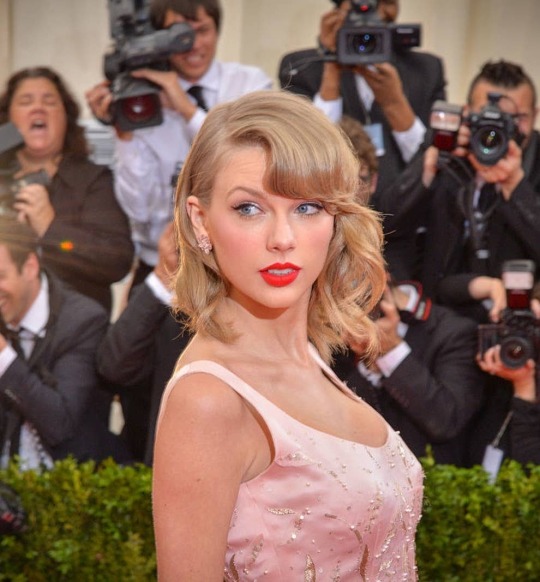
It’s hard to remember (in internet years) that before 2010, Swift was just a teen pop star and not yet a cultural lightning rod. She was already taken seriously as a musician and had plenty of cultural capital coming into the decade; in 2009, having already won Artist of the Year at the AMAs, she was about to accept a Video Music Award for Female Video of the Year when Kanye infamously interrupted her speech. In early 2010, she won Album of the Year for Fearless at the Grammy Awards, beating out Beyoncé and Lady Gaga.
Her early stardom revolved mostly around the fact that she was a precocious young country artist who wrote her own songs, without the risqué edge or sexy-but-wholesome cognitive dissonance of someone like an early Britney Spears to worry white parents and inspire pearl-clutching tabloid magazine covers. And it wasn’t really until Speak Now — when Swift was already a mainstream star but still categorized as country — that she began teasing the media and her fans about the ways her autobiographical lyrics mapped onto her real life, especially regarding the men she was dating.
People are still wondering whether Alanis Morissette’s “You Oughta Know” is about Uncle Joey, so it was startling for a young woman songwriter and musical celebrity of her commercial reach to use her songs to consistently craft such intimate stories about such equally public men, including Joe Jonas, Taylor Lautner, and John Mayer. And there was something uniquely bold about the way Swift started using her confessional songwriting and melodic sensibility to “get the last word” on her relationships, as People magazine framed it in her first cover story.
People hardly batted an eye in 2018 when Ariana Grande’s first No. 1 hit, “Thank U, Next,” literally name-checked her list of ex-boyfriends, and that’s in no small part because of Swift. Because even as reality TV stars like the Kardashians and Real Housewives were figuring out how to create multiplatform storytelling through social media, Swift was already pioneering the strategy in the big pop machine. Yes, she opportunistically used this to shame exes, create fodder for talk shows, and garner magazine covers; and even then, it raised some hackles about the way she was using her power. But it was undeniably compelling theater, and even nonfans were watching.
That multiplatform mixture of music and drama wouldn’t have succeeded without the undeniably catchy earworms Swift’s diary entries were wrapped in, or without the devoted fanbase of Swifties that she cultivated online. This all helped her break chart records with her most explicitly pop albums, including 2012’s Red and 2014’s ’80s-inspired 1989. The latter garnered the biggest first-week sales for a pop album since Britney Spears in 2002, helping Swift keep the tradition of the monocultural pop star alive.
But as Swift’s music saturated airwaves, and her willingness to tease behind-the-scenes details of her life in her songs moved beyond ex-boyfriends like Harry Styles (“Style”) into swatting at other pop stars like Katy Perry (“Bad Blood”) the public began to sour on Swift’s strategic use of her personal life in her music. (To Swift���s credit as a performer, no other pop star could sing the lyrics “Band-Aids don’t fix bullet holes” about a dispute over a backup dancer with a straight face.)
Juxtaposed with Swift’s self-celebrating “girl squad” feminism, her opportunism — and seeming hypocrisy — started to rankle. By 2015, even racist sympathizer and critic Camille Paglia came out of the woodwork to anoint Swift a “Nazi barbie,” calling out her tendency to treat friends as props. And all these contradictions of Swift’s persona would come to a head when Swift’s seemingly buried feud with Kanye came roaring back the following year.
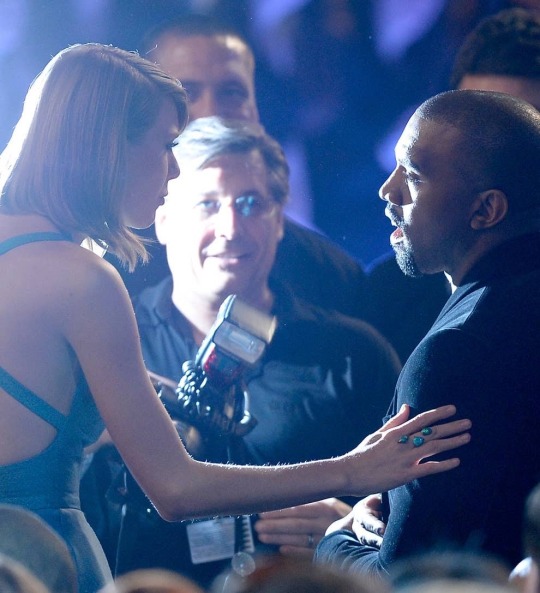
It makes sense that her clash with Kanye and Kim Kardashian West became the first time she experienced a real backlash. Unlike the drama around her dating life or with Perry, it was the first time Swift was up against equally savvy adversaries — celebrities who, like her, were professionals at merging their public and private lives.
The fight was a meta moment by design, inspired by West’s song “Famous,” where he raps: “I made that bitch famous.” In retrospect, it seems clear that West, as much a publicity-seeking pop diva as Swift, was trying to get the last word after going on an apology tour about the interruption heard round the world. Swift claimed to be annoyed over what she saw as the song’s credit-taking message, and she tried to make it part of her own narrative. “I want to say to all the young women out there,” she intoned in her speech accepting a Grammy for Album of the Year in February 2016, “there are going to be people along the way who will try to undercut your success or take credit for your accomplishments or your fame.”
In another era, Swift’s storyline might have won the day. Her publicist denied that she had approved the line in the song, despite Kanye’s claim that he had checked with her before releasing it. But celebrity narratives, to some degree, were no longer being decided just by white-dominated mainstream media. Black publications were the first to tease out the racial undertones of Swift’s lie in the ensuing “he said, she said,” specifically as a white woman playing on the ingrained sympathy and benefit of the doubt that white women are given in US culture.
Still, it wasn’t until Kim’s Snapchat leak that July — where Swift could be heard approving the song — that the Swift-as-victim narrative became a framework for understanding her entire career. Contemporary white pop stars like Grande and Miley Cyrus had faced musical appropriation backlashes, but this time it was Swift’s entire persona — not just her music — that were under scrutiny.
Swift’s memeable response to the leak — “I would very much like to be excluded from this narrative” — was followed by her own disappearance from the media landscape. By the time the 2016 election happened — amid the chatter about white women’s complicity in electing Trump — Swift’s refusal to take a political stand solidly cast her as a cultural villain, and her symbolism as an icon of toxic white womanhood was sealed.
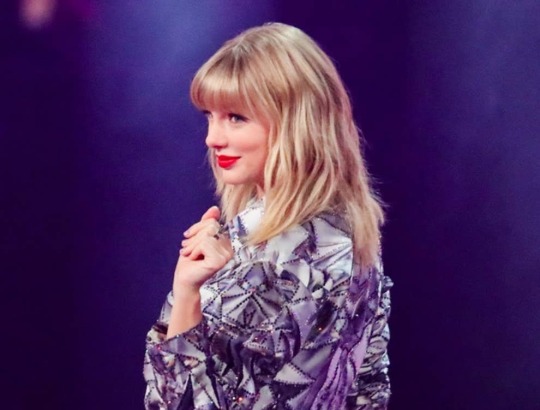
If the clamor of social media (especially Twitter) was central to the Swift backlash, it was also central to her eventual resurgence. Over the past decade, social media (especially Instagram) has tipped the scales in celebrity coverage and helped celebrities tell their stories on their own terms, almost without intermediaries. Swift knew how to use that to her advantage and decided to play the long game.
By refusing interviews for 18 months, wiping her social media clean, and focusing on cultivating her Tumblr fanbase, Swift removed herself from the cultural conversation for a beat. This kind of brand management helped her keep an ear to the ground while in a self-imposed exile. But it’s as if the culture couldn’t stop conjuring her; rumors about her absence spread, including that she had traveled around inside a suitcase.
In August 2017, she wiped her social media clean and reappeared with a snake video — reclaiming the serpent emojis — in what was ultimately the announcement for her Reputation album, and which remains one of the most iconic social media rollouts ever. “Look What You Made Me Do,” the lead single, was endlessly memed — Swift couldn’t come to the phone, a perfect metaphor for her cultural disappearance and, perhaps, a kind of ghostly remake of the Kanye call. The album succeeded because it seemed as though Swift was finally open to owning her melodrama and messiness. She subsequently broke records with the tour and album sales.
Still, her political silence was affecting her image and music. By 2018, insipid corporate wokeness had become the order of the day, and Swift Inc. again pivoted musically and culturally. Swift came out for the Democratic candidates in the 2018 midterms, framing her support in terms of LGBTQ rights and racial justice. And this year, the second single from her latest album, Lover — “You Need to Calm Down” — was a perfect encapsulation of her politics of messiness, conflating anti-gay prejudice with Twitter drama. (And somehow turning the video into a celebration of pop queens supporting each other). This fall, she has made sure to include über-stan–turned–pop star (and video coproducer) Todrick Hall at her awards show moments, attempting to expand the range of racial and sexual identities included in what used to be her mostly straight white “girl squad” feminism.
For all of Swift’s success at updating her persona, she’s never quite regained her massive radio dominance — but no pop star can depend on the success of singles for over a decade. In fact, Swift is one of the most interesting figures of the decade because her stardom is caught between the old-school era of album buying and our current streaming moment.
And, inevitably, Swift has turned her own industry issues around streaming and artistic ownership into a wider commentary on artists’ rights — which happens to work as a canny form of further brand management. She framed herself as an ethical businesswoman when she called out Apple for not paying artists, and she battled with Spotify over streaming royalties but without really pushing for wider systemic industry change.
Earlier this year, Swift started a new artist-versus-industry fight about her music masters being bought out from under her by nemesis Scooter Braun. It’s a complicated story, one that Swift has framed as being about “toxic male privilege,” and the fact that Braun mocked her during the Kanye era — once again blurring, in her trademark mode, the personal with the public and the systemic with the individual.
Instead of being seen as opportunistic, Swift seems to have succeeded in framing her campaign as a fight for unsigned and less powerful artists’ rights, which has resonated at a moment where content creators are all pitted against the 1% of the tech and corporate worlds. This time, even Rep. Alexandria Ocasio-Cortez — a squad member any star would envy — backed her up.
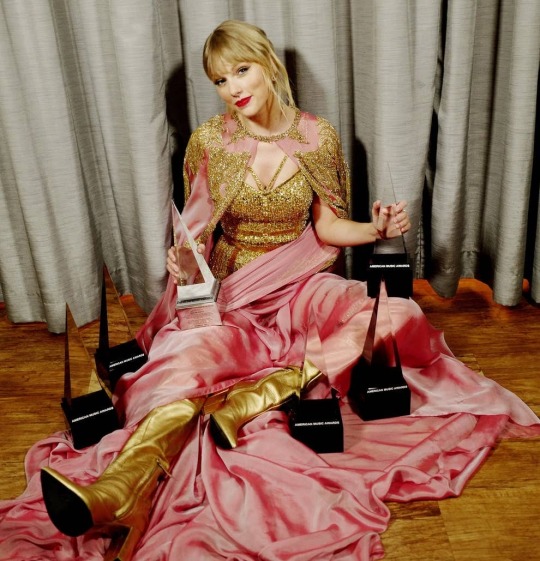
Swift’s response to being anointed Artist of the Decade by the AMAs and Billboard provides interesting insight into how she sees herself now and where she thinks the next decade is going. She chose Carole King, one of the preeminent symbols of pop music authenticity, to present her AMA, squarely placing herself in a genealogy of great women singer-songwriters. She also enlisted shiny next-gen pop stars Camila Cabello and Halsey to join her during her performance of old hits.
In her Billboard speech, Swift name-checked newer stars like Lizzo, Becky G, and Billie Eilish as the future of the industry. Tellingly, they are women who, so far, have not played into the tabloidy pop dramas that dominated the 2010s. If this decade has shown us anything, it’s that blurring public and private through music can reap big rewards, but it also opens up stars — especially the women of pop — to more intense scrutiny and a higher degree of personal accountability.
In a Billboard interview looking back on the decade, Swift spoke about her relationship to fame and learning to hold things back. “I didn’t quite know what exactly to ... share and what to protect. I think a lot of people go through that, especially in the last decade,” she said. “There was this phase where social media felt fun and casual and quirky and safe. And then it got to the point where everyone has to evaluate their relationship with social media. So I decided that the best thing I have to offer people is my music.”
Like Lana Del Rey denying she ever had a persona, or Lady Gaga stripping down with Joanne, there seems to come a point when white pop divas need to declare themselves authentic and all about the music — as if their ongoing narratives aren’t part of the show. But the way Swift used her image and the never-ending soap opera that swirled around her to make space for her music in an increasingly saturated attention economy was itself a kind of art. ●
8 notes
·
View notes
Text
My favourite Indian films of 2018
Sorry for the wait this year. 2018 in the movies mirrored my own life a lot; the films on the list are films to love, make you feel something human, and they force you to take their characters and hold them close to your chest as if they were your own. While the most interesting mainstream movies from South Asia over previous years on this blog have excelled when they chose to experiment with the language of cinema itself, the 10 I’ve written about here have, similar to great literature, embraced pain, longing, love and everything else that comes with being alive.
10. Theevandi
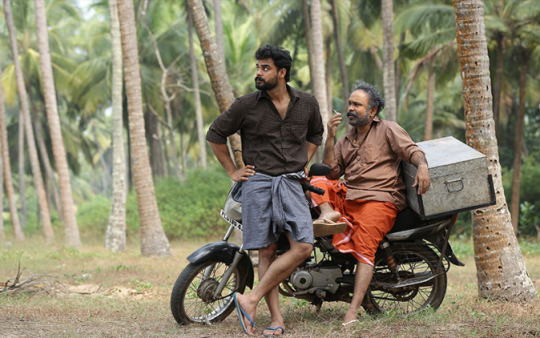
I’ve seen this film being described as an “anti-smoking movie.” I couldn’t disagree more. It’s a story about the nature of habit (rather than the disease of ‘addiction’), of locating the source of your personality, your soul, and trying to change it against the will of nature. During my time in India this year, nothing brought more joy than an ice burst and cutting tea at the side of the road, perching on the side of the pavement and watching life carry on around you. And while this is a film with a main character who wants to quit smoking, it isn’t about cancer. It isn’t about that horrible sooty smell at the end of your fingers, or yellowing teeth or a decreased sperm count. It’s about how something as innocuous as a tube of rolled up tobacco hanging out of your mouth can act as a fragile crutch for the entire weight of the world.
9. Laila Majnu

Like many of my favourites this year (and every year), this re-telling of one of South Asia’s most important romances wants to know what love is. Here, we see love not as a generous, giving emotion, but as pure greed. With one of Bollywood’s most gorgeous soundtracks, that bleeds furiously out of every frame, and a constant sparkling gleam of glamour over these gorgeous young actors and the Kashmiri hills they prance around in, I enjoyed this enough just based on the commercial tropes it toys with for fun. But its real beauty lies in its brave and painful final declaration; that the most divine love may connect you to God and remove your soul from your body, but it will destroy you and your connections to the Earth, as the cruelest form of asceticism.
8. Cake
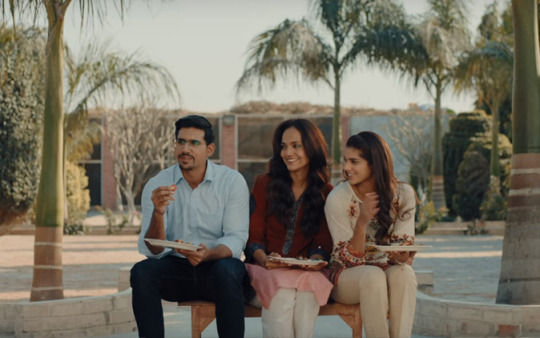
I’m including a Pakistani movie (again) because our film industries were birthed under one national identity, and I don’t see the studios of Karachi as any more culturally distant from Mumbai’s Film City than Kodambakkam. Moving to Cake, this stunning portrait of a dysfunctional family surprised me against all my instincts that it was a Western-facing production clearly aimed at piercing its way into festivals and a patronising ‘World Cinema’ bracket. It is in fact, a study of shifting societal politics in an increasingly extreme and polarised World, of figuring out where your values stand in the midst of religion, feudalism and globalisation, and accepting that when these heavy, abstract concepts weigh down on your shoulders, it is the human beings around you who will feel the strain first.
7. Golak, Bugni, Bank Te Batua
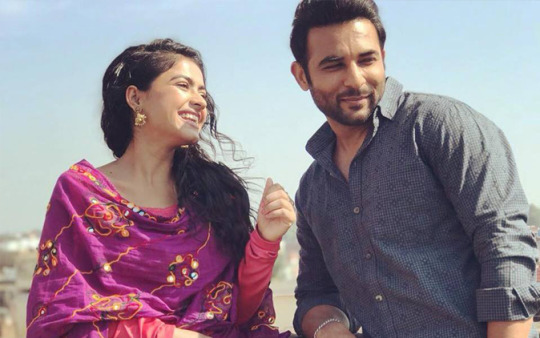
I really love Punjabi cinema. Seeing it come into its own and reclaim its cultural narratives and aesthetics from bastardizing Bollywood (where now even a film set in rural Gujarat will feature a Punjabi language song) has brought a lot of joy. Now here comes a happy little film not set on preaching the glory of Sikkhi or telling an epic tale of brave warriors or earnest farmers, but on bringing us into the lives of a middle class Hindu Punjabi family in a small mohalla of a tier 2 city. And these aren’t the Hindu “Punjabis” of a Bollywood movie set in Chandni Chowk, who might throw in a “tussi” or “tuadi” here and there at the most. These are real people with a real culture, as intertwined with Punjab and their Sikh neighbours as they are separate. The film doesn’t patronise them by drawing humour from their novel identity; the situational character-based slapstick and witty back-and-forth theatrical dialogues exist in a warm parallel with the “World” of the movie. And then the lives of these people change in one instant as demonetisation hits, and we are hilariously reminded that whether you’re Hindu or Sikh, Northern or Southern, you are (unfortunately) still in India.
6. C/o Kancharapalem
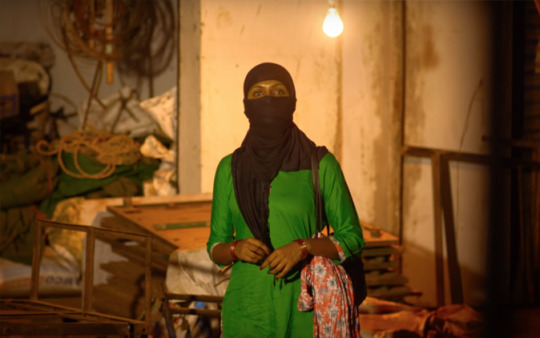
I won't say this film stood out as a "Telugu movie", as such slight, subtle films are an anomaly no matter what language they're made in or how brash those other films produced in the same mother tongue may be. These small and quiet tales, with their shy characters who live at the fringes of society, whether that mean they are Muslim prostitutes or simple middle class teachers carving out a living in a small village, are special because they manage to transmit such humanity without stirring from the dark alleyways or shaded courtyards where they take place. Not every film needs to stand tall like an intimdsting Tolstoy tome; some can be as unassuming as an RK Narayan novella and still make us feel like they're an epic.
5. Pyaar Prema Kaadhal
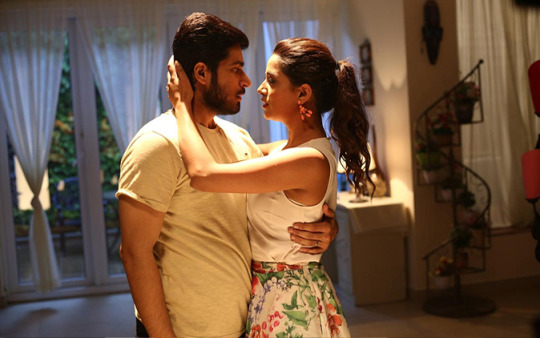
Let's be honest. Casting two leads from a reality show, putting heart shaped balloons in your posters and deciding on the title "Love, Love, Love" pretty much screams "trash" doesn't it? But here was a humbling reminder that Indian popular culture can surprise you in the most pleasant of ways. These two good-looking young wannabe-stars and their social media followings represent so much about the "new India", a steadfastly singular culture (or cultures) whizzing through the fiery hoops of globalisation at breakneck speed, coming to terms with a mixed up value system, raging sexual frustration and an ever widening class gap, all of which have left a generation feeling more connected yet more alienated than ever before. This is 'Pyaar, Prema, Kaadhal', a flawed and horny love story, sweating with tension and all the repulsive angst of human emotion, yet with the glamorous musical heart of Indian cinema still beating loudly underneath.
4. Manmarziyaan

There was as much to love about 'Manmarziyaan' as there was to hate. The age-old filmi love triangle rears its head again, only this time with characters who are more manipulative and frustrating than any you've seen in a "mainstream" movie before. But while the film never forces you to judge (at times leaving you confused about whether you're actually supposed to like any of these people) it demands that you engage. It's encouraged some of the finest writing on cinema I've seen in recent years, and such an unashamedly "Bollywood" film inspiring this thrilling thought and analysis from our finest critics (whether their judgement is kind or not) warrants its inclusion on this list alone. Then there's the way its incredible soundtrack weaves in and out of scenes like the characters own breaths, the way life changing moments are obscured from the script by deafening silences and acutely observed minutiae, and of course THAT lead performance. I'm not sure if I "liked" it or not, but I sure as hell can't wait to watch it again.
3. Pari
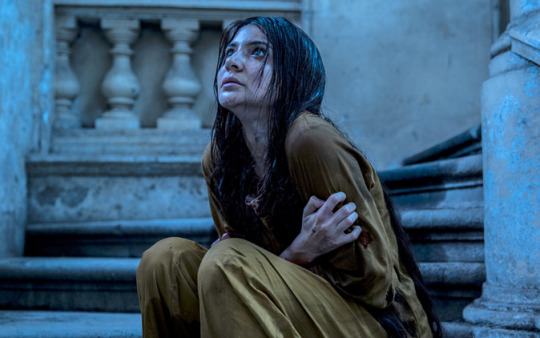
The better the film, the harder it is to write about. 'Pari' is rich with metaphor. While being a ghost story (and a damn good one) merely on the surface, it has plenty to say about the way our society treats women, poses the question of if we can truly be born evil, and even critiques our savage treatment of "the other" in a global society where more of us are on the run than settled in our homes. But I think its biggest strength is that while it challenges you to reach into the very centre of your being and take a look at yourself and the World around you, its craft and screenwriting is so good that not at any moment does it give you a second to realise that's what you're doing.
2. Rangasthalam
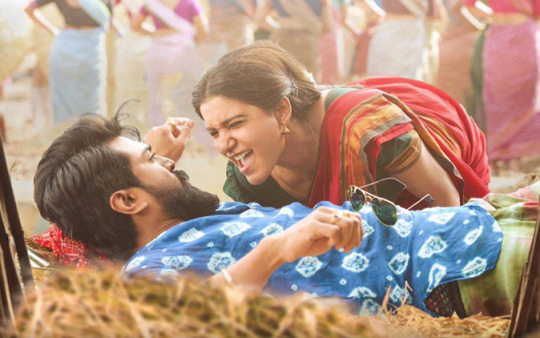
'Rangasthalam' is so great. Like really really great. Once an innocuous muscle man, Ram Charan has channelled his inner Dhanush and located his physicality, writhing and slanging his way into the mind and body of the quintessential South Indian rural hero, hoisting his lungi and flicking his beedi into one of the most visceral and truly cinematic masala movies in living memory. The thumping pace and kinetic choreography (both of the rousing song sequences and the busy, lived-in frames of the rest of the movie) evoke a dusty, violent world with the same panache of Ameer in 'Paruthiveeran' or Sasikumar in 'Subramaniyapuram', while the moustache twirling dialogues and meticulous emotional beats offer as much pure fun as a "Dabangg" or a "Khakee" or any classic Hindi masala movie. I've read pieces linking the cinema of 'Rangasthalam' to film noir traditions, but to me it simply proved that the masala genre still has as much excitement to offer as any other.
1. Mukkabaaz

I'll remember 2018 as the year that Anurag Kashyap, previously India's frontrunner in the realm of "interesting" (but more often headscatching) cinema, stopped thinking with his very big brain and instead used his even bigger heart. His most straightforward film is undoubtedly his best, Hollywood-esque in its writing but firmly Indian in its sentiment. The scale is small - empty boxing arenas, bleak winding village paths and a cast plucked from the TV screen - but its emotions are pure opera. This is a timeless film, and though it laughs at the ridiculousness of modern India, poking a nasty smug finger at caste oppression, petty politics and the bureaucratic nightmare of simply trying to stay alive, it defies analysis. Much like the song at the centre of the story, the violently stunning 'Paintra', it only asks that you feel. And what more could we want from cinema?
I've had so much fun at the movies this year. From dancing to Dilbar in the cheap seats of G7 in Bandra to reciting Dhanush's Maari 2 dialogues at the bus stop outside Ilford Cineworld, Indian movies have continued to punctuate my life and bring me more joy than they have any right to. I can't wait to do this all again this year. What were the films that stirred you over the last 12 months? Let me know. Xx
#tovinothomas#malayalam#mollywood#indian movies#telugu#tollywood#laila majnu#bollywood review#bollywood#anushka sharma#taapsee pannu#tovino thomas#manmarziyaan#anurag kashyap#indian cinema#ram charan#rangasthalam#pari#mukkabaaz#pyaar prema kadhaal#raiza wilson#tamil#kollywood#punjabi cinema#punjabi movies#punjabi#pakistani cinema#abhishek bachchan#simi chahal#hindi cinema
314 notes
·
View notes
Text
29/10/19 : TEDDY BOYS. HAUL GIRLS. #1
What are they?
Teddy Boy: (in the 1950s) a young man of a subculture characterised by a style of dress based on Edwardian fashion (typically with drainpipe trousers, bootlace tie, and hair slicked up in a quiff) and a liking for rock-and-roll music.
Haul Girl: A girl or women who makes a haul video.
The revolution will not be televised.
youtube
The tv shows you what it wants to show you.
Television tells us what the people who run the TV stations want us to know. But social media today sometimes provides an alternative.
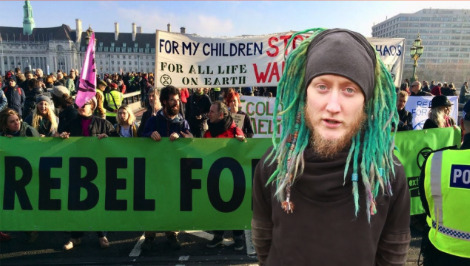


Subculture - Under/Beneath
We are looking today at youth and subcultures… their historicity and their contexts, and where we are with what might be called subcultures and youth cultures today.
GUIDE TO THE CULTS
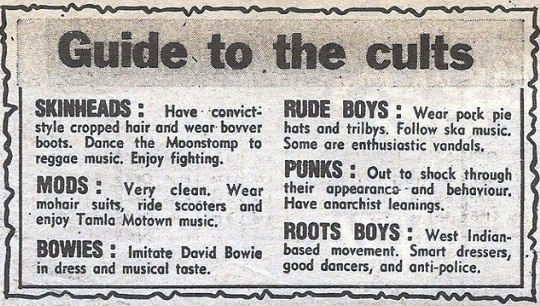
A genuine piece from the mirror in the 1980s.
youtube
Sex Pistols : This is one of the most infamous moments on television. Today it seems tame, but in 1976 this was enough to get the presenter fired.

Like Duchamp's 'ready mades' - manufactured objects which qualified as art because he chose to call them such, the most unremarkable and inappropriate items - a pin, a plastic clothes peg, a television component, a razor blade, a tampon - could be brought within the province of punk (un)fashion...
Dick Hebdige - Subculture: The Meaning of Style
Hebdige’s book has long been consider the authorative text on subculture.
In the book he discusses the ready made aesthetics of punk. Punk was the first reaction to the developing politics of Thatcher and Reagan… here a refusal to take part in business as normal led to music that sounded amateur and fresh… the opposite of the progressive rock that had dominated the mid 1970s and early 80′s.
Vivienne Westwood
Objects borrowed from the most sordid of contexts found a place in punks' ensembles; lavatory chains were draped in graceful arcs across chests in plastic bin liners. Safety pins were taken out of their domestic 'utility' context and worn as gruesome ornaments through the cheek, ear or lip...fragments of school uniform (white bri-nylon shirts, school ties) were symbolically defiled (the shirts covered in graffiti, or fake blood; the ties left undone) and juxtaposed against leather drains or shocking pink mohair tops.


Jamie Red and others made zines that could be assembled in this same way, collaging and making work that felt it could have been made in the house, and often was.
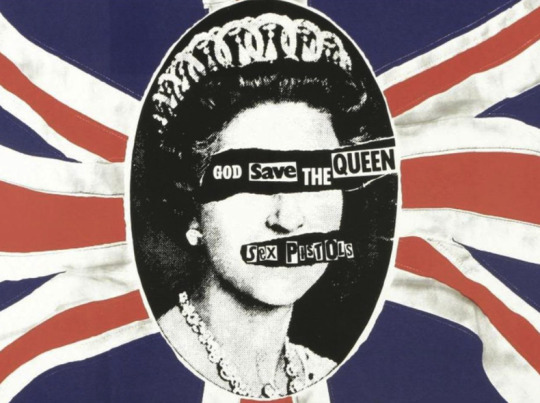
Subcultures
Subcultures are tribal, bringing people together to form loose relations outside of the mainstream.
Different subcultures:
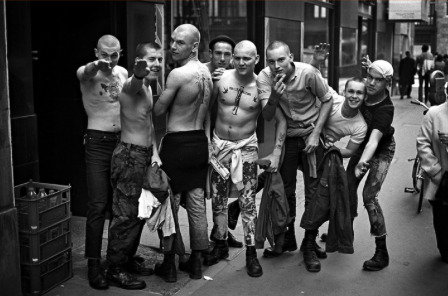

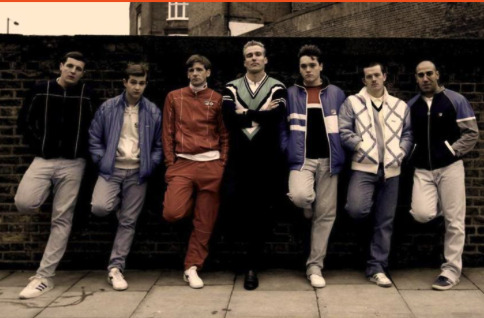
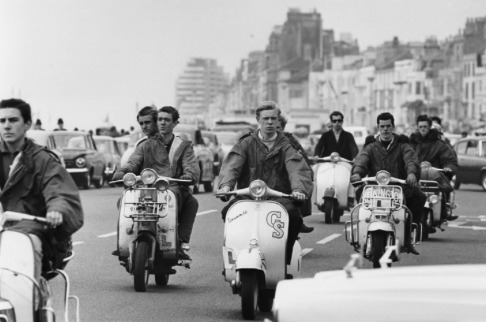
Even subcultures have subcultures… specific types of goth (steampunk, lolita) rude boys, K Pop sub genres, grunge punk rock etc
Once about a specific youth culture movement based around the disco music of the 1970s, clubbing subculture developed into rave culture in the late 80s and 90s, and has become a mainstream movement in the last few years.

Fiorucci Made Me Hardcore, Mark Leckey, 1999
youtube
“Something as trite and throwaway and exploitative as a jeans manufacturer can be taken by a group of people and made into something totemic, and powerful, and life-affirming.”
Subcultures are about a sense of belonging, often to people who feel excluded or disenfranchised from the mainstream.
youtube
Cosplay - form of subculture
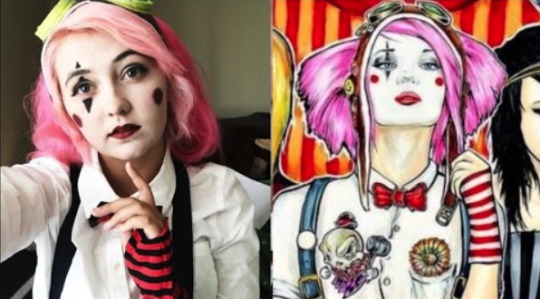
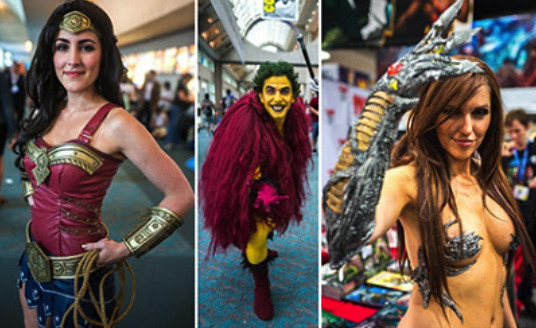
The Joker and Harlequin are both characters who live for misrule, and both of them come from characters in the commedia dell’arte.
Harlequin relates directly to Harley Quinn… the Lord of Misrule was the peasant who was given the task of making sure that Xmas revellers got very drunk and very naughty.
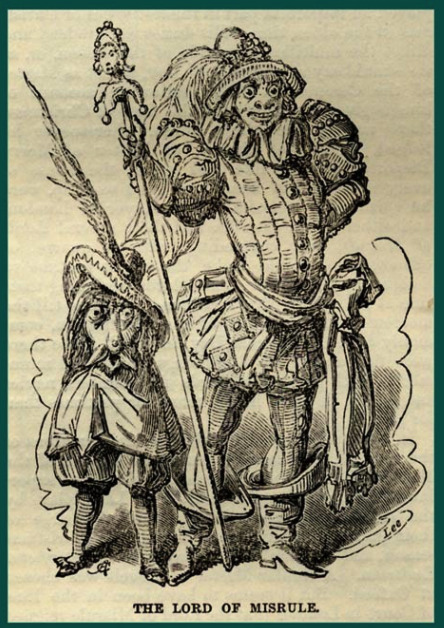
The World Turned Upside Down
These characters link back to the ideas of the carnival, a time when the world was turned upside down. Christmas was initialy this kind of festival. People didn’t know if they would make it through the winter, so they made merry whilst they could. In the carnival Kings become Jokers, Jokers became kings.
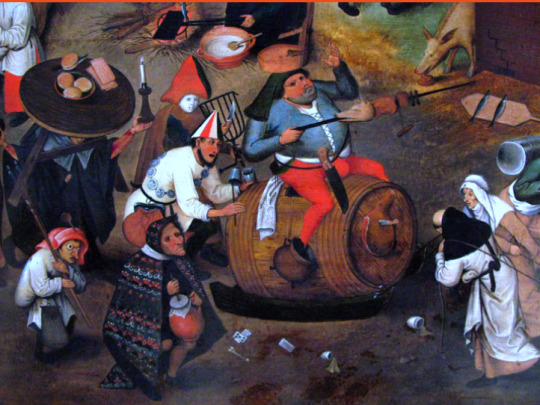
Carnival extracts all individuals from non-carnival life, non-carnival states and because there are no hierarchical positions during carnival, ideologies which manifest the mind of individuals cannot exist.

...And finally in a few relatively rare instances, we find an extreme form of revelry in which the participants play-act at being precisely the opposite of what they really are; men act as women, women as men, kings as beggars, servants as masters, acolytes as bishops. In such situations of true orgy, normal life is played in all manners of sins such as incest, adultery, transvestitism, sacri- lege, and lese-majeste treated as the order of the day...
Edmund R. Leach, Rethinking Anthropology
In Rabelais and His World (1965), Mikhail Bakhtin likens the carnivalesque to the type of activity that often takes place in the carnivals of popular culture. In the carnival, according to Bakhtin, social hierarchies of everyday life—their etiquettes, and normal structures—are turned on their head.
Court jesters become kings, kings become beggars; opposites are mingled (fact and fantasy, heaven and hell).
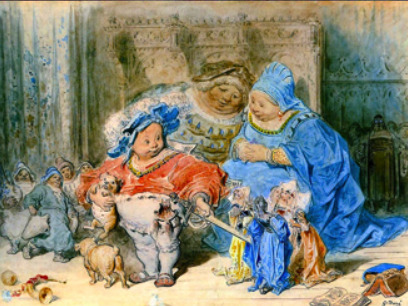
Drag Cultures

Much in the same way that Madonna, undeniable icon though she is, in no way invented voguing, neither did the queens on RuPaul’s Drag Race invent the concept of "shade", "realness" or any of the other essential sayings liberally adopted wholesale by the internet. But what the show has done is continually provide a potted queer history. Whether it’s through highlighting ball culture, trans activism, gender fluidity, or queens like the legendary Lady Bunny; or simply by allowing the contestants to talk about their lived experience, the show has put an all too rare slice of gay and trans history in American (and the world’s) living rooms and laptops.
Drag Race has brought a subculture into the mainstream. It has brought secret languages into modern parlay.
From RuPaul raising a pair of opera glasses to say archly, “I can’t wait to see how this pans out”, to season four queen Latrice Royale’s “the shaaaaade of it all”, social media’s gif game has been vastly bolstered by nine seasons of this show. A gif reaction needs to encapsulate maximum emotion, drama, and appearance – and the queens on Drag Race have all three in spades. Tumblr couldn’t create gifs fast enough in the early seasons, and the joy of so many strong characters, and sound-bites, means that there is a reaction for absolutely every occasion. Season 6 winner Bianca Del Rio named one of her world tours after her own much-gif’d catchphrase, “Not today Satan”.
Memes and online culture have helped the show become part of the everyday.
Historically, "sissy" has been used as an insult against feminine-seeming men. Ru-Paul’s Drag Race not only reclaims the word – “now sissy that walk” is the phrase said at the top of each catwalk, usually preceding a demonstration of almost gob-smacking creativity – but shows that adopting a truly feminine character requires massive amounts of charisma and self-confidence. The show is wildly popular with women, not simply because of the incredible looks and transformations served by each queen, but because it is a celebration of feminine mystique in all its forms.
It has helped reclaim a sense of agency in an era of toxic masculinity.
The little show that could has turned into a global behemoth, with tours around the world each year, and an annual convention in Los Angeles. Last year, a second US convention launched in New York, while London hosted the first European edition, DragWorld UK, which saw a number of the show’s queens and RuPaul’s right-hand judge, Michelle Visage, holding court. And as fabulous, glamorous and downright funny as the queens are, the real joy came from seeing the response of teenagers to meeting their idols. RuPaul and Visage are giving hope to lost kids around the world, whatever their gender, ethnic background or sexuality. By sharing their stories, the Drag Race contestants are giving comfort and inspiration to viewers, as well as swathes of entertainment.
The show has brought disenfranchised, often hidden cultures into the open. And given people something that not only entertains, but also empowers.
The difference between Drag Race US and Drag Race UK summed up in one perfect tweet…
With RuPaul’s Drag Race UK finally airing on both sides of the Atlantic Ocean, it’s got fans realising just how different the two editions of the show are… International fans were subjected to the colourful world of British slang and swear words, leaving dozens bemused about what exactly the UK queens are actually saying…. But in a viral tweet shared by one of the British queens, it’s managed to capture the crucial difference between the US and UK versions of Drag Race.
Sum Ting Wong shared a screenshot of a Facebook post that so beautifully sums up the two shows:
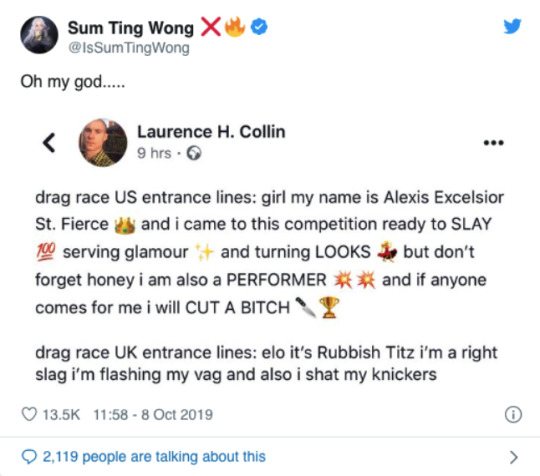
Pink News JOSH MILTON OCTOBER 8, 2019
Drag is culturally derived, and finds its forms based on local customs. In the UK drag has a relationship to Vaudeville and play, which means it does something different to the american show. It is less about the act of putting on a show, and more about the comedic, slightly catty relations that we have come to associate with saturday evening tv here in the UK.
But that doesn’t mean it is mean in itself… it still brings a subculture to a mainstream audience. Remember, if I talked about this with you in the 1990s, I would face prosecution under Section 28
"shall not intentionally promote homosexuality or publish material with the intention of promoting homosexuality" or "promote the teaching in any maintained school of the acceptability of homosexuality as a pretended family relationship".
New Subcultures

‘It's hard not to be struck by the sensation that, emos and metalheads aside, what you might call the 20th-century idea of a youth subculture is now just outmoded. The internet doesn't spawn mass movements, bonded together by a shared taste in music, fashion and ownership of subcultural capital: it spawns brief, microcosmic ones.
In fact, the closest thing to the old model of a subculture I've come across is Helena and the haul girls. Their videos are about conspicuous consumption: a public display of their good taste, carefully assembled with precise attention to detail. When you put it like that they sound remarkably like mods.’
Alexis Petridis
Marie Antoinette, 2006 (Sofia Copolla)
youtube
3 notes
·
View notes
Note
1-25 cause i'm an asshole girlfriend XOX
Love you baby ❤️
1. what is your gender? Can I say Amazon?
2. what are your pronouns? she/her/hers
3. what is your gender presentation like? Hmm... IDK. I think I’m more of a femme, but my dress style is a little butch
4. what is your Gender Euphoria Outfit? Cute crop top and short shorts
5. what makes you feel validated? Being complimented on my hair, clothes, makeup, ect. Tbh, it doesn’t happen nearly enough and it really helps.
6. top five favorite parts of your body (n why you love them)? Hmm... my legs - I’ve always kind of liked the shape of them. My hair - it’s a mess a lot of the time, but it’s a beautiful mess. My lips - they’re probably my most feminine feature and I’m very fond of them. My eyes - don’t know why, just like em. Can I say my breasts? They’re really cute, lol
7. favorite trans meme/bit of trans humor? A few good options I can’t quite remember, but probably this: https://samael.tumblr.com/post/146212141815/khatoblepas-there-they-are-the-two-genders
8. how did you pick your name? To be honest, i got it from a Lonely Hearts Club doll and then it became the name of my first Wizard101 character. Yes, I was that girl growing up. Then it was an account name/gamer tag. By the time it was time to pick a name, I kind of had always known what it should be.
9. what does your name mean? It’s celtic (like me lol) and it means strong.
10. do you have any trans pride merch? A trans flag sports bra, a trans flag hat, and a trans flag shirt that I designed myself. I love them all very much
11. recent happy trans moment? This is pretty depressing, but I’m struggling to remember something very recent. I can remember a time a while ago where I was taking pictures of myself naked and I felt very feminine, so maybe that
12. favorite trans headcanon? Black Widow
13. favorite canon trans character? (alt: 2nd favorite trans headcanon?) Going with a 2nd headcannon because I keep not watching the few shows with good trans rep in favor of watching the same cis-centric shows and movies again and again, because I hate starting new shows.
I’ve been headcannoning Ryder from Mass Effect Andromeda as a trans woman for a while now, but lately I said fuck it and now Shepard’s trans too. Whoops ;)
14. favorite trans blog(s)/trans blogger(s)? Oh no! There’s so many!! Aaagh! I follow a lot of really amazing trans bloggers, so no shade at all to anyone not on this list. You’re all amazing and I value you all.
Now, onto the list. I mean, obviously @sagaofsarahrose ❤️ She’s incredible and if you’re not following her, you should be. @skylightsofmylife @latex-tiddettes @thefiresontheheight @casey-is-a-jazzpunk and @themaddahlia are all super cool folx who do lots of funny/inspiring/really fucking neat stuff. And like, a million other cool trans people I follow here and on Instagram (less than subtle instagram plug)
15. favorite trans celebrity? I have a soft spot for Teddy Geiger, cause a) my girlfriend loves her and b) I feel like I don’t see enough trans wlw rep in the little mainstream rep we do have, so it warms my heart to see her and her fiance so happy together. Also I just found out she co-wrote one of my favorite One Direction songs, so...
16. song that gives you Big Trans Feels? Can’t Trust the News and Lived a Life by Enter The Haggis
17. something you wish you could tell your younger self? That being a girl is something you can just do. You don’t have to keep living like this just cause no one ever told you there’s another way. Like hell, that fucked me up so bad growing up. Cause I wanted to be a girl, but I didn’t think there was any way I could. Fuck...
18. what would your Ideal Fashion Look be? Somewhere between lesbian Irish farmhand and lesbian cowgirl. Lesbian
19. (how) does your gender relate to your sexuality? Hmm... kind of a hard one to answer TBH. I think I knew (subconsciously) that I was a lesbian before I knew that I was a woman. But, because at the time I thought I was a straight man, I didn’t feel great about how much I was interested in lesbians. Even now, as a lesbian myself, I still grapple with some guilt and shame when seeking out wlw content (something terfs do not help with in the slightest)
So I guess, I would say they’re intertwined. I don’t know what it would be like to have one without the other and I’m glad I don’t have to (no disrespect to cis lesbians or straight trans people, y’all are valid as fuck. I just personally am very happy with how my gender and sexuality intersect)
20. do you have a comfort item? I have an emotional support mermaid. Does that count? Her name is Helena
21. what makes you feel euphoric? When my girlfriend says I’m beautiful ❤️/ any time I’m out w/ my mom or sister and some one says “you ladies”
22. what genre of media would you love to see more trans characters in? Superhero movies, video games, Disney princess movies, and Star Trek. Specifically as protagonists and love interests in all of those. Basically just all the things I enjoy (which are all coincidentally absurdly slow with any kind of LGBTQ rep)
23. claim something as trans culture. Someone else has probably done this, but D&D. D&D was one of my favorite things to do growing up, but I’ve only allowed myself to come back to it as a woman and sorta... reclaim it, I guess. So yeah, D&D is now a trans thing (tm) and everyone else has to ask our permission to play (but like, just don’t be a transphobic, queerphobic, homophbic, racist, ableist, sexist, exclusionist dick and we’ll probably let you in)
24. give some love to your trans friends/mutuals (alt: give some love to the trans community in general) Hmm.. I’m not entirely sure what this one means. But if you’re trans (offer not valid for transmeds cause why you gate-keeping? The cis (tm) don’t need our help babe) I love you ❤️ ❤️ ❤️ ❤️ ❤️ ❤️ ❤️ ❤️
25. what's your favorite part of being trans? Getting to be me
4 notes
·
View notes
Photo

JACOBIN MAGAZINE
Review of Economics for the Many (Verso, 2018).
“. . . A New Britain where the extraordinary talent of the British people is liberated from the forces of conservatism that so long have held them back, to create a model 21st century nation, based not on privilege, class or background, but on the equal worth of all. And New Labour, confident at having modernized itself, now the new progressive force in British politics which can modernize the nation, sweep away those forces of conservatism to set the people free.”
– Tony Blair, 1999
“Economics are the method: the object is to change the soul.”
– Margaret Thatcher, 1981
Though they didn’t know it at the time, those who observed Britain’s 1979 general election and the Labour Party’s defeat were witnessing far more than a simple change of government. The Thatcherite ascendency that followed would not only reconfigure the institutions of the British state but establish — through a combination of luck, guile, and brute force — an entirely new political consensus that would consciously reshape British society in the process. By the time Labour returned to power nearly two decades later, a wholesale ideological counterrevolution was underway and its own leaders were among its most zealous partisans.
Perhaps no other European country in the postwar era (with the possible exception of Russia) has experienced a comparably drastic ideological shift, and certainly no working class has suffered such bitter repression and defeat in such a short time. After 1990, much of the global left faced a period of retrenchment but Britain’s political sclerosis, and the widespread sense of defeat it engendered, was particularly acute.
What the late Mark Fisher called “capitalist realism” — the pervasive sense that “capitalism is not only the only viable political and economic system, but also that it is now impossible even to imagine a coherent alternative to it” — reigned supreme, simultaneously afflicting the Left and animating partisans of the new order. Henceforth, “progress” was to imply only an ever-more dizzying advance into a global capitalist modernity from which no escape was conceivable and “conservatism” was anything that even momentarily stood in the way.
As a consequence, parliamentary socialists — those who survived — were forced to assume an increasingly defensive posture in a (sometimes futile) effort to preserve welfarist institutions or at very least mitigate damage. Within the Labour Party itself, the initially promising leadership of Ed Miliband ended in disappointment and defeat. Outside the electoral sphere (with a few exceptions) the Left grew more abstract in its analysis of power and less programmatic in its prescriptions for confronting or reconfiguring it. While individual causes and struggles like the anti–Iraq War movement and the 2010 student protests inspired heroic activism, its overall position was nothing short of dire and the malaise ran deep.
As many socialists immediately understood, therefore, Jeremy Corbyn’s surprise 2015 election as leader of the Labour Party opened up horizons of political possibility previously unimaginable. Gone would be the former leadership’s triangulating positions on austerity, immigration, and welfare policy and back on the table were familiar social-democratic objectives around taxation, redistribution, and public ownership.
But as the party’s left celebrated a stunning turn of events amidst historically weak fortunes, critics of Corbynism overwhelmingly saw something primitive and atavistic at work. “A return to the 1970s” quickly became a favorite theme of Britain’s right-leaning press, which cast Labour’s new leadership as both a pre-Blairite and pre-Thatcherite throwback: the desiccated corpse of the “Old Labour” anachronism born anew. Even after the party’s success in the 2017 general election, versions of the narrative have persisted, as has likeminded opposition from the “modernizers” on its now diminished right flank.
Much in this genre of analysis can undoubtedly be put down to poor historical memory, political opportunism, or simple bad faith. But its ubiquitousness, particularly in commentary on the center and center-left, is evidence of how just deeply the dogmas of the 1990s — and the conservative modes of thinking they reflect — ultimately run.
Economics for the Many
“To secure for the workers by hand or by brain the full fruits of their industry and the most equitable distribution thereof that may be possible upon the basis of the common ownership of the means of production, distribution and exchange, and the best obtainable system of popular administration and control of each industry or service.”
– Clause IV, Labour Party Constitution, 1918
If the Labour Party’s 2017 election manifesto emphasized somewhat familiar (though nevertheless bold) themes like nationalization and redistribution, its next one promises to be considerably more expansive — encompassing, among other things, different forms of public ownership and industrial democracy.
Radical thinking of this kind has only grown more urgent. By virtually any imaginable standard — even those its adherents have set themselves — Britain’s ruling economic consensus has been a failure. Austerity has not, as successive Tory chancellors have insisted with such fanatical certitude, delivered the promised economic recovery. The legacy of the Conservative government’s deflationary fiscal policies can instead be seen in human costs that can only be called catastrophic: stagnant wages, dire and rising levels of poverty among both children and adults, crumbling public services, and a corroded social fabric alongside an ever more gilded existence for Britain’s economic and cultural elite.
The underlying problems, of course, predate both austerity and the 2008 crash. A bloated financial sector with its talons deep in the Treasury has produced lopsided and regionalized growth heavily favoring metropolitan London and largely servicing unsustainable consumption at home and environmentally destructive extraction abroad. Precarity and high levels of household debt for ordinary families, meanwhile, have followed an overall shift from the older manufacturing economy to one structured heavily around services and global finance.
Economics for the Many — a new collection of essays edited by Labour’s shadow chancellor John McDonnell — is simultaneously an intervention into these realities and a programmatic sketch of radical left thinking for the twenty-first century. As its title suggests, the book is also an effort to reclaim economics for the Left, an easily stated though admittedly daunting task amid neoliberalism’s persistence as the economic lingua franca.
Simultaneously localist and internationalist in scope — and encompassing everything from trade, the environment, and alternative models of firm ownership to fiscal policy and the challenges posed by platform monopolies and the data economy — the essays are accessible and minimally abstract, both in their concern with the practicalities of policy and their awareness of the difficulties of implementation in the face of political constraints.
This, however, makes them no less innovative. In chapters on democratic alternatives to private enterprise, for example, Rob Calvert Jump, Joe Guinan, and Thomas M. Hanna explore cooperatives, community-based systems of ownership, social entrepreneurship, and workplace democracy, their analyses including case studies from across Europe, North America, and within the UK. Building on Labour’s 2017 manifesto, which promised to make workers the first potential buyer should a company go on sale, Guinan and Hanna propose active investment by local authorities in the cooperative sector.
(Conitnue Reading)
#politics#the left#jacobin#jacobin magazine#uk politics#jeremy corbyn#john mcdonnell#labour party#democratic socialism#socialism
24 notes
·
View notes